No, understandably, no one comes to Barbados for a bright-light, big-city experience. And yet, it would be a mistake to ignore Barbados’ capital, Bridgetown, altogether. After all, it is a vibrant blend of history, culture, and tropical charm. Here, you can explore UNESCO-listed landmarks, lively markets, and a scenic waterfront. From historic sites to great shopping and authentic Bajan cuisine, Bridgetown offers a perfect taste of the urban side of the Caribbean, and in this post, I’m taking you to places not to miss when exploring Barbados’ charming capital.
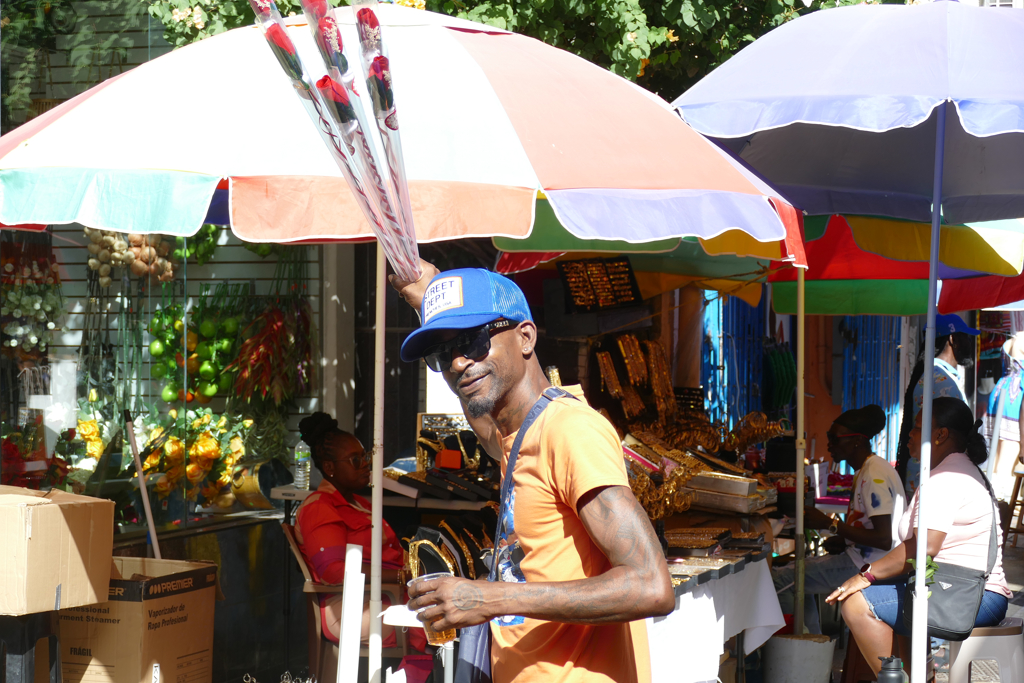
Welcome to Bridgetown!
Barbados has a complex history marked by waves of colonization, migration, conflict, and ultimately progress. Although Portuguese and Spanish sailors stumbled upon the island by chance in the early 16th century, they never settled. Nevertheless, they coined the name Los Barbados, inspired by the fig trees, whose long, hanging roots resembled beards. Thus, it was the English who would change the island’s fate forever.
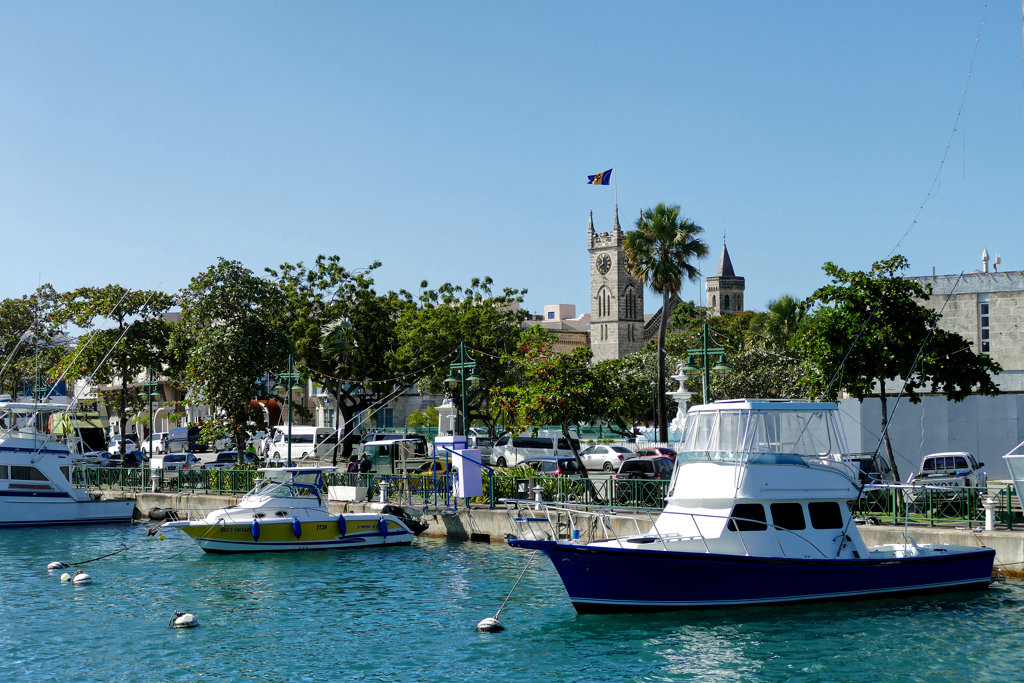
In 1627, the first British settlers claimed the island for the English Crown. They quickly transformed it into an agricultural colony. In 1628, they established a settlement at the harbor known as Careenage. They named it Bridgetown after a simple bridge.
The town quickly developed into a trading center, particularly for sugar, rum, and, with that, sadly, also slaves. Yes, its harbor made it a pivotal location in the barbaric Atlantic Triangular Trade. Bridgetown flourished as a trading center with large warehouses and stately government buildings.
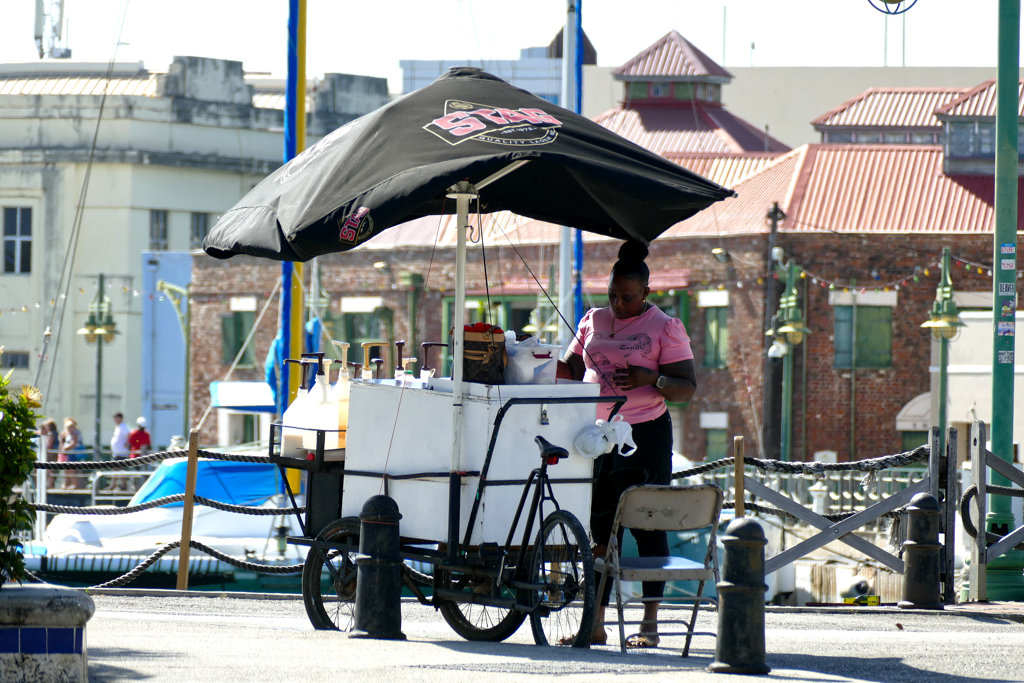
However, the city also played a strategic role in regional defense. The historic garrison area housed British troops for over 100 years. To this day, Garrison Savannah and the surrounding buildings remain among the best-preserved military installations in the Caribbean.
Bridgetown gained worldwide recognition in 2011 when UNESCO declared the historic old town and garrison a World Heritage Site.
Don’t You Miss It
Whatever you choose to experience, Bridgetown is quite compact and easy to explore on foot, making it a perfect place for a day of sightseeing and shopping and immersing yourself in authentic Bajan life.
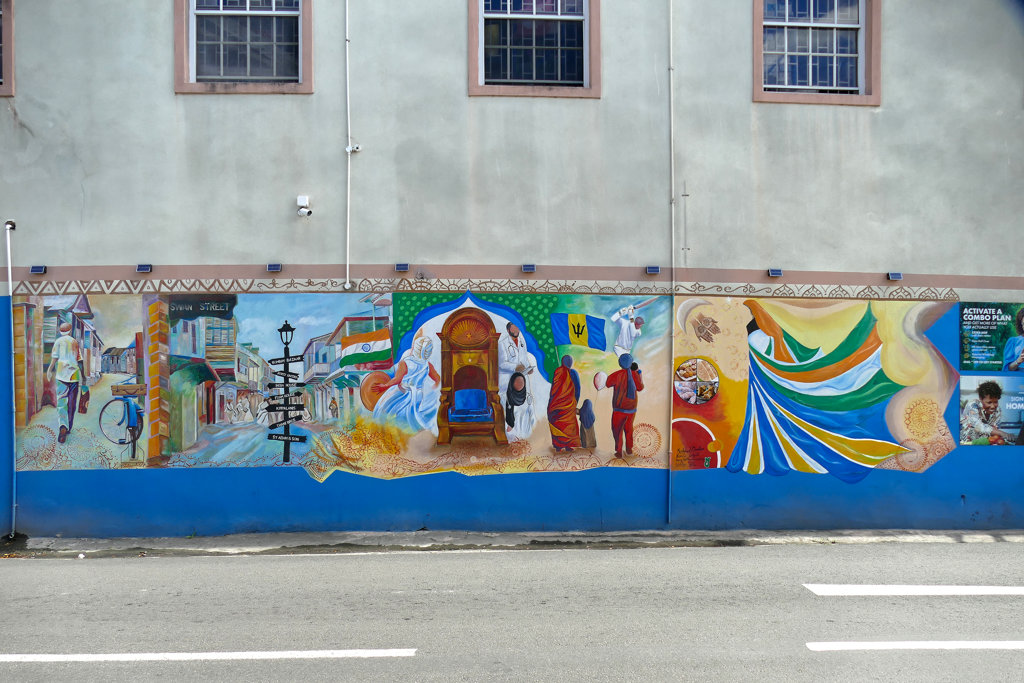
Initially, I hadn’t planned to write a separate post about Bridgetown. The city was supposed to be just another chapter in my in-depth post about Barbados. But I quickly realized that would be beyond the scope. Bridgetown is so interesting and multifaceted that I can only do justice to the city in all its aspects in a separate, detailed post.
Old Historic Town
Bridgetown’s historic Old Town is a fascinating blend of colonial charm and vibrant Caribbean culture. A UNESCO World Heritage Site, it showcases well-preserved British colonial architecture, including the Parliament Buildings, National Heroes Square, and St. Michael’s Cathedral. Its waterfront location along Careenage Harbour lends the city center a certain maritime charm.
Independence Square – National Heroes Square – Parliament
The ideal spot to start a walk through Bridgetown is where the beginning of a better era is celebrated, namely at Independence Square.
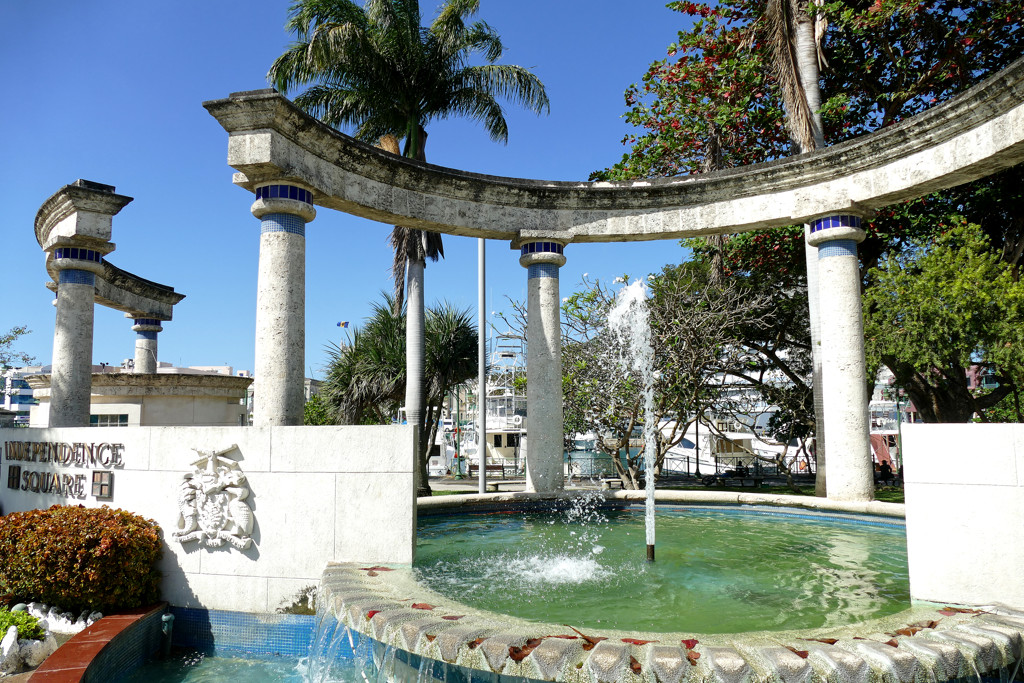
It is a scenic public space that commemorates the country’s independence from British rule, obviously. Located along the Careenage River, the square provides a tranquil retreat including beautiful views, seating areas, and lush greenery. Cultural events, celebrations, and national ceremonies often take place in the area around a statue of The Right Excellent Errol Walton Barrow, who was Barbados’ first Prime Minister and a key figure in the country’s move toward independence.
As you cross the Chamberlain Bridge, you find yourself in National Heroes Square. Eleven outstanding Barbadian personalities are now replacing a bronze statue of Lord Nelson. This reflects Barbados’ long and painful journey from colonial rule to an independent republic.
Wind of Change
Richard Westmacott created the bronze statue of Admiral Nelson, which stood for the longest time in what was then known as Trafalgar Square. Since 1999, the square has been called National Heroes Square. Also, the statue became increasingly controversial as a colonial symbol.

In 2017, the monument was vandalized on the eve of Independence Day celebrations. On the plinth, Nelson was called a racist and white supremacist.
After the statue was dismantled, the bronze Nelson has been living in a sanctuary at the Barbados Museum since 2020.
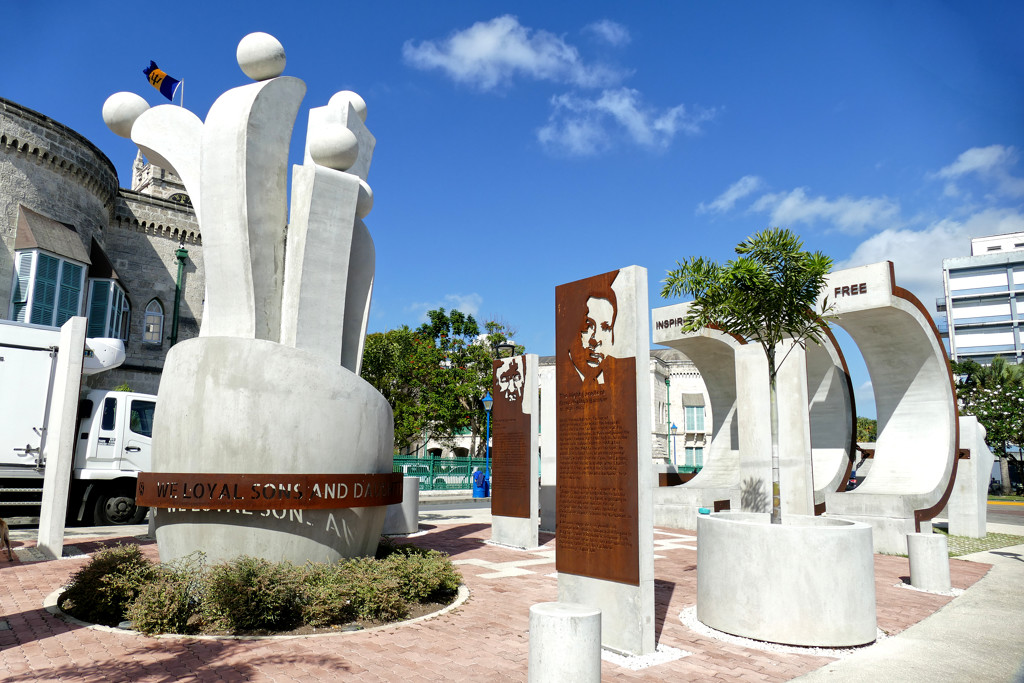
The following Barbadians have proudly taken his place:
Bussa was born in Africa and forcibly brought to Barbados as part of the transatlantic slave trade. He was enslaved on Bayley’s Plantation, where he eventually led the largest slave rebellion in Barbados in 1816.
Sarah Ann Gill was a religious leader who defended Methodism and freedom of worship against colonial oppression.
Samuel Jackman Prescod was the first person of African descent elected to the Barbados House of Assembly.
Charles Duncan O’Neal was a doctor and political activist who championed social justice, workers’ rights, and education for all.
Barbados’ first Prime Minister, Sir Grantley Adams, was a key figure in the West Indies Federation, laying the groundwork for independence.
Trade unionist Clement Payne led the 1937 labor rebellion, which helped improve workers’ rights and conditions.
Sir Hugh Springer was an educator, trade unionist, and former Governor-General who contributed to Barbados’ education system.
Another major trade union leader, Sir Frank Walcott, helped establish labor rights and improve working conditions in Barbados.
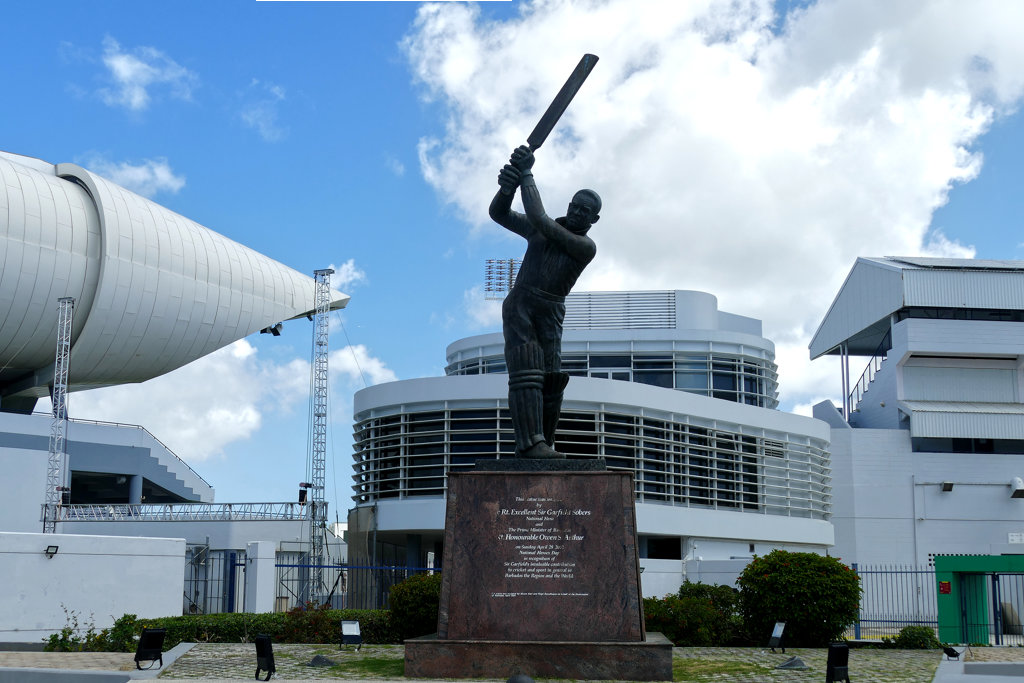
Legendary cricketer Sir Garfield Sobers is widely regarded as one of the greatest players of all time.
Obviously, Errol Walton Barrow was the first Prime Minister of an independent Barbados.
And finally, Robyn Rihanna Fenty is probably the most famous Barbadian in the world.
Fun Fact
For many years, what is now National Heroes Square was called Trafalgar Square. Like the square of the same name in London, it was dominated by a statue of Lord Nelson. That monument was inaugurated in 1813 and was thus almost 30 years older than Nelson’s Column in London!
Behind National Heroes Square, the Barbadian flag flies proudly over the Parliament Buildings. Completed in 1874, it is the third oldest parliament building in the Commonwealth. One of its main features is the Clock Tower, which rises above the city with its slender coral stone design. The building is not only the meeting place for the House of Assembly and the Senate, but it also houses interesting exhibitions.
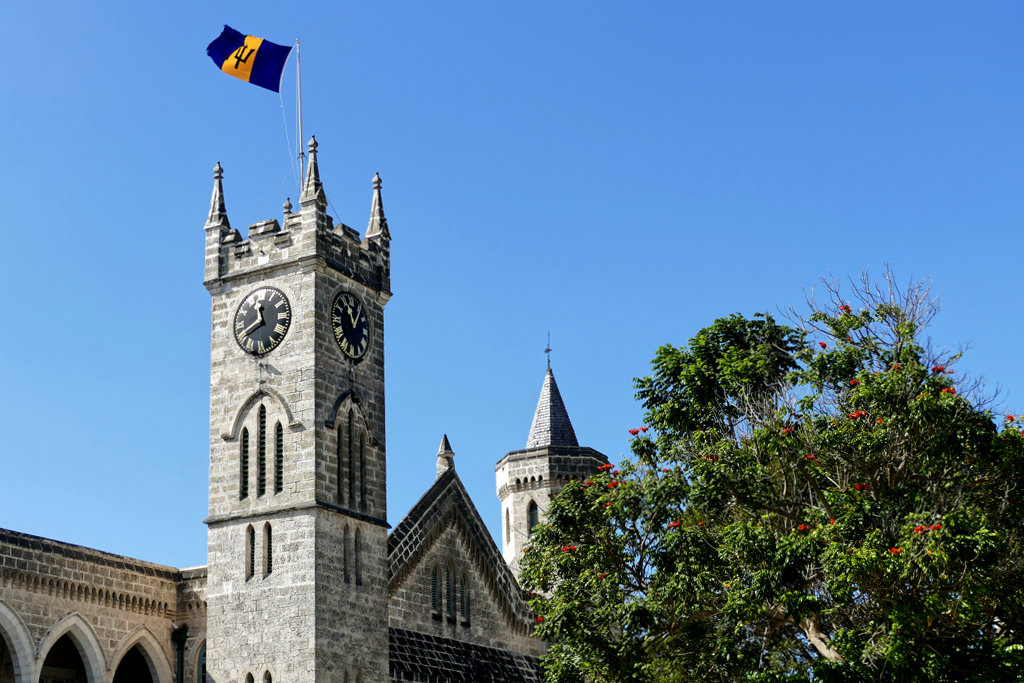
The National Heroes Gallery and Museum of Parliament offer a detailed tour that paints a picture of the history of government in Barbados, as well as important events and personalities.
Normally, the museum can be visited for 20 BBD. However, it is currently – in spring 2025 – closed due to extensive construction work.
Cathedral Church of Saint Michael and All Angels
Two blocks east of National Heroes Square stands the Cathedral Church of Saint Michael and All Angels.
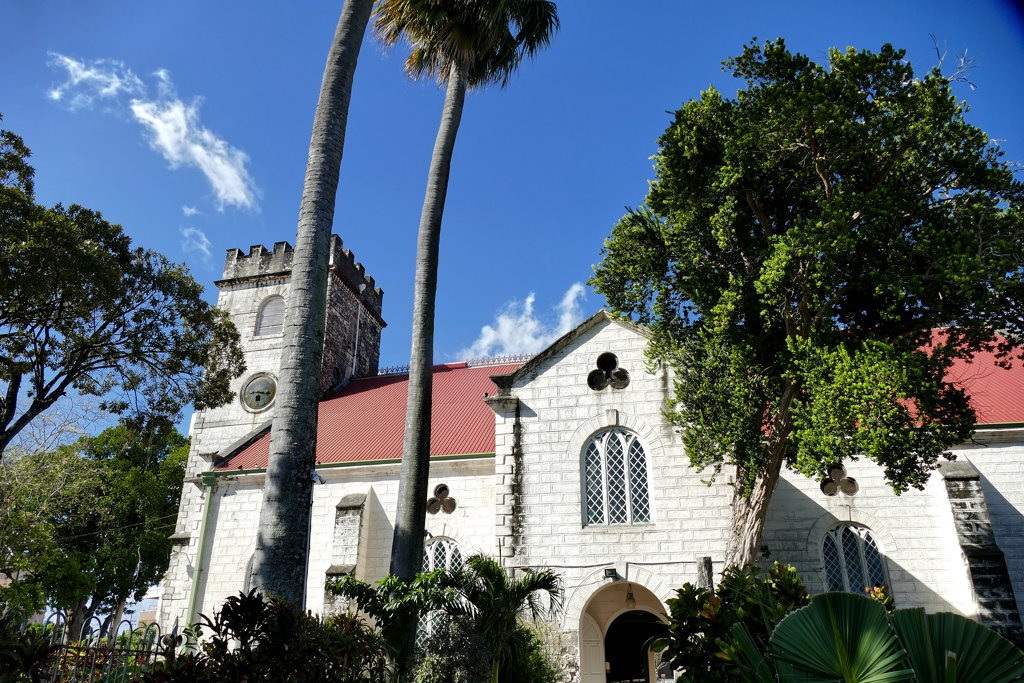
It was originally built on the site of today’s Anglican St. Mary’s Church as a small wooden parish church and completed in 1665. After being destroyed by a hurricane in 1780, it was rebuilt on its present site nine years later. Although the great hurricane of 1831 damaged the building severely, it survived.
Also of note is the cemetery, located directly adjacent to the church. Two of Barbados’ most important figures were laid to rest here. Sir Grantley Adams, the first Prime Minister of Barbados and also the first and only Prime Minister of the West Indies Federation, as well as his son Tom Adams, who succeeded his father as the second Prime Minister.
Broad Street – Swan Street – James Street
Broad Street, Swan Street, and James Street are three of the most well-known shopping streets in Bridgetown. Although they lie in very close proximity to each other, each of them offers a unique experience.
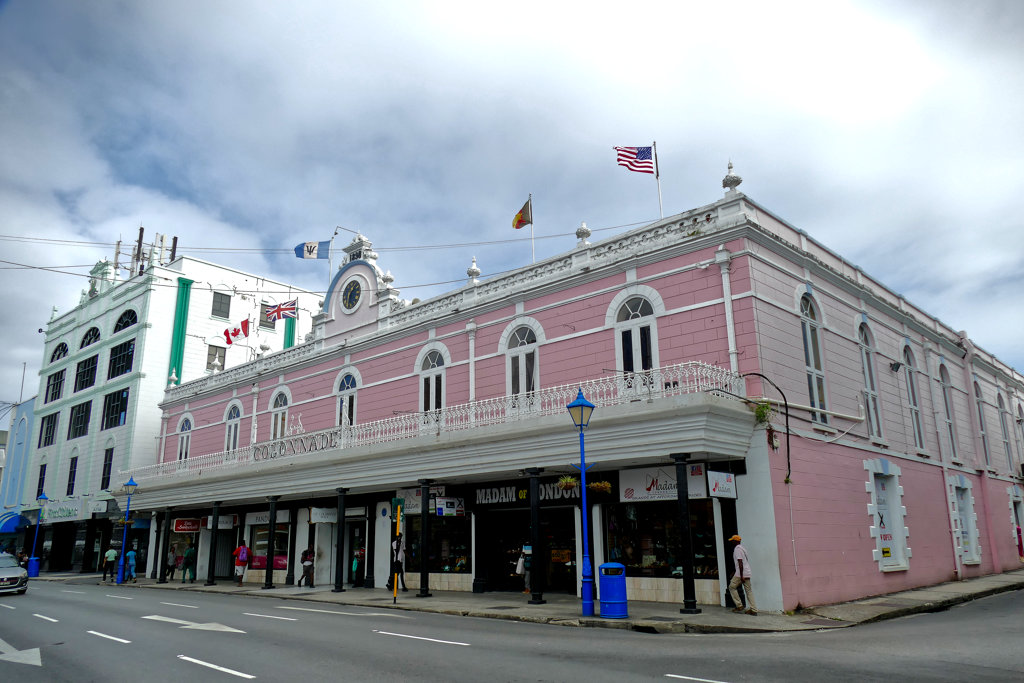
Broad Street is the main commercial artery of Bridgetown. It is home to high-end retail stores, duty-free shopping, banks, and government buildings. This is where you’ll find the grand Parliament Buildings, as well as popular stores like Cave Shepherd, the island’s largest department store. Hence, it’s ideal for designer brands and luxury shopping
In stark contrast, Swan Street is Bridgetown’s bustling market street, known for its vibrant atmosphere, affordable goods, and a very local experience. Small shops, street vendors, and budget-friendly fashion stores are lining the pedestrian-friendly street.
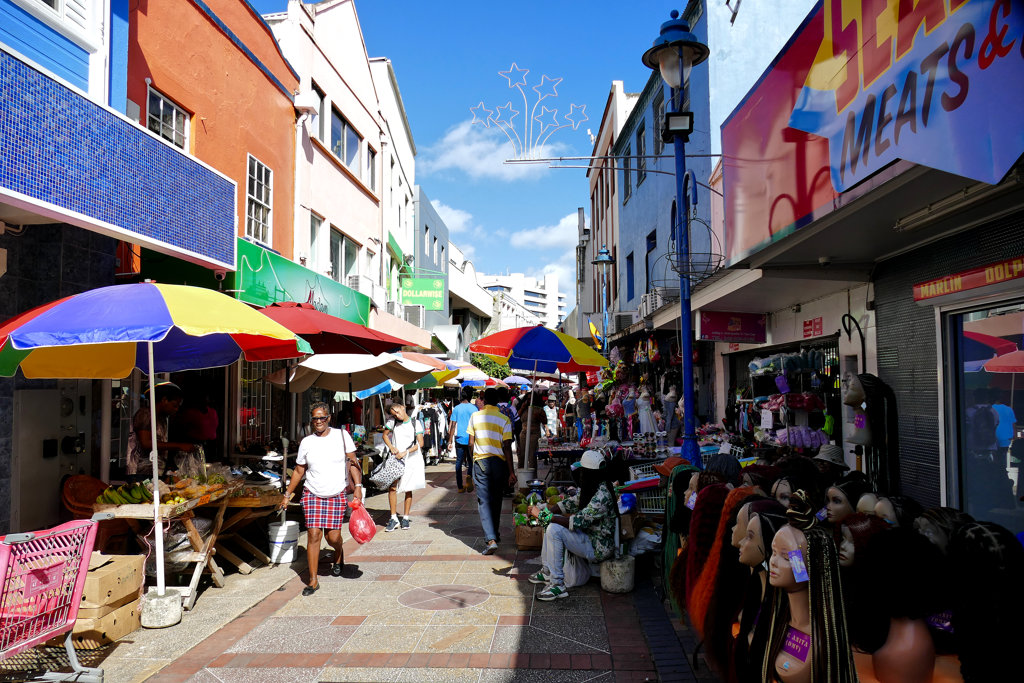
Especially in the afternoon, it can get quite crowded, with music blaring from the shops.
It offers an authentic Caribbean market vibe and allows you to experience daily Barbadian life.
My Tip
If you want to relax for a moment without missing any of the hustle and bustle, I recommend stopping by Shanti’s Rum and Roti for a cool drink and a delicious snack.
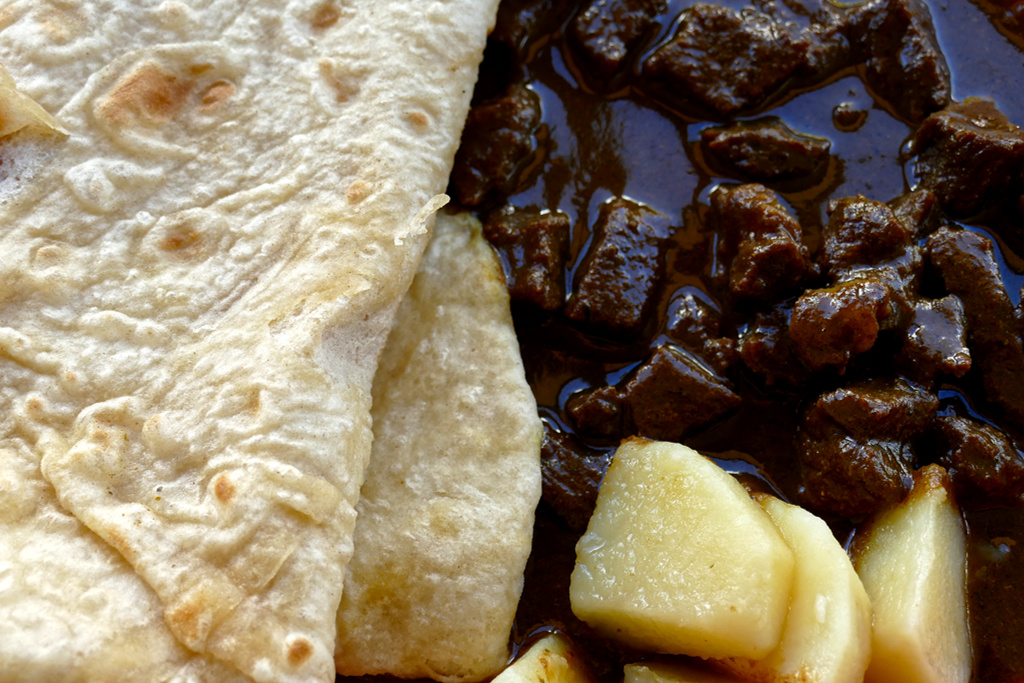
A dark, narrow staircase leads you to the first floor. From your seat on their small veranda, you have an excellent view of the ado in the surrounding streets.
The least famous of this trio is James Street. Yet, it’s here where you can experience an alluring blend of historical significance and local commerce.
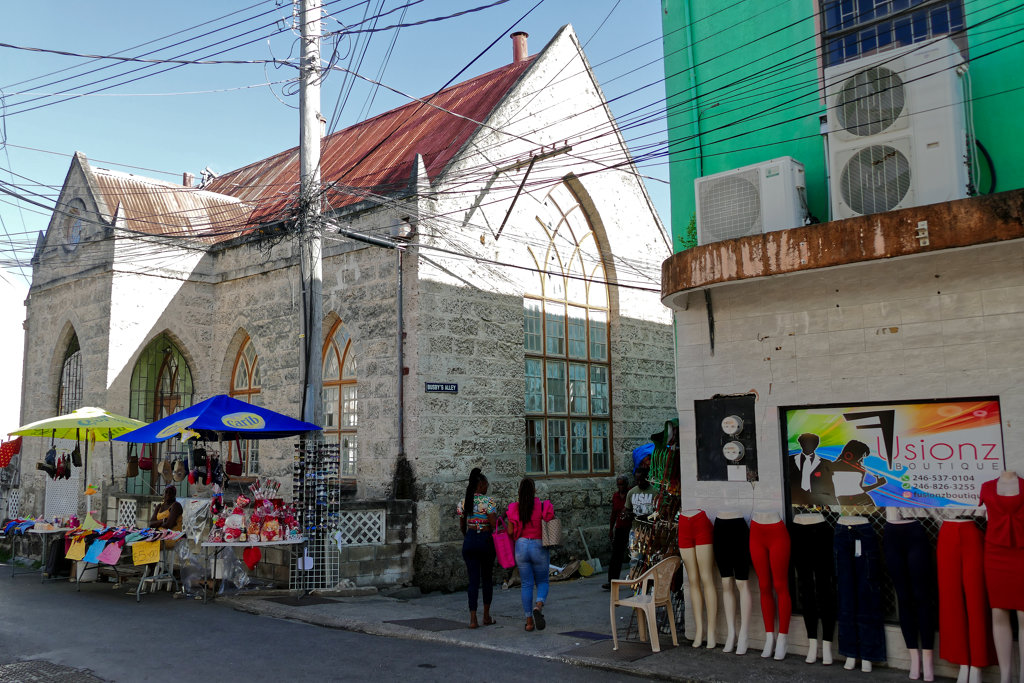
It’s quieter than Swan Street but has some local shops, small businesses, and, most importantly, historic sites nearby.
The Synagogue Historic District
Yes, James Street offers far more than just shopping. North of the street lies a historically significant part of Barbados’ history, namely the Synagogue Historic District.
Various communities, including Jewish settlers and Quakers who arrived during the colonial period, shaped Bridgetown’s history.
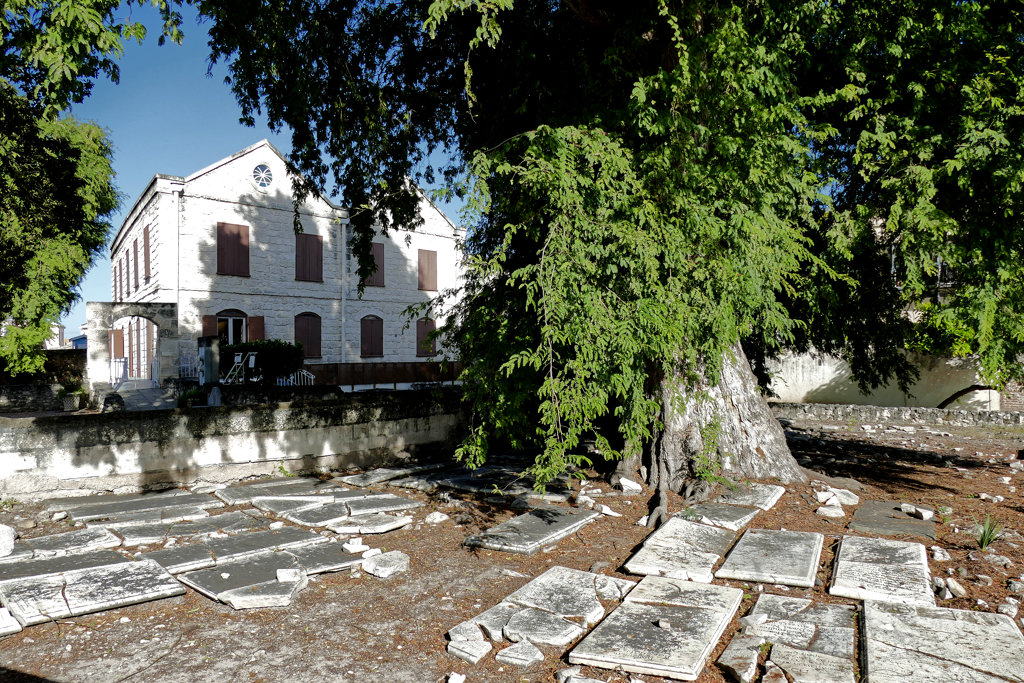
The Jewish community in Barbados actually dates back to the mid-17th century, when Portuguese Sephardic Jews fled persecution from the Inquisition in Brazil. They settled in Bridgetown, where they contributed significantly to the island’s economy, particularly in the sugar industry.
Obviously, the Jewish district in Bridgetown has been centered around the Nidhe Israel Synagogue, which was built in 1654. This makes it one of the oldest synagogues in the Western Hemisphere. The adjacent Jewish cemetery contains gravestones dating back centuries, providing insight into the island’s Jewish history.
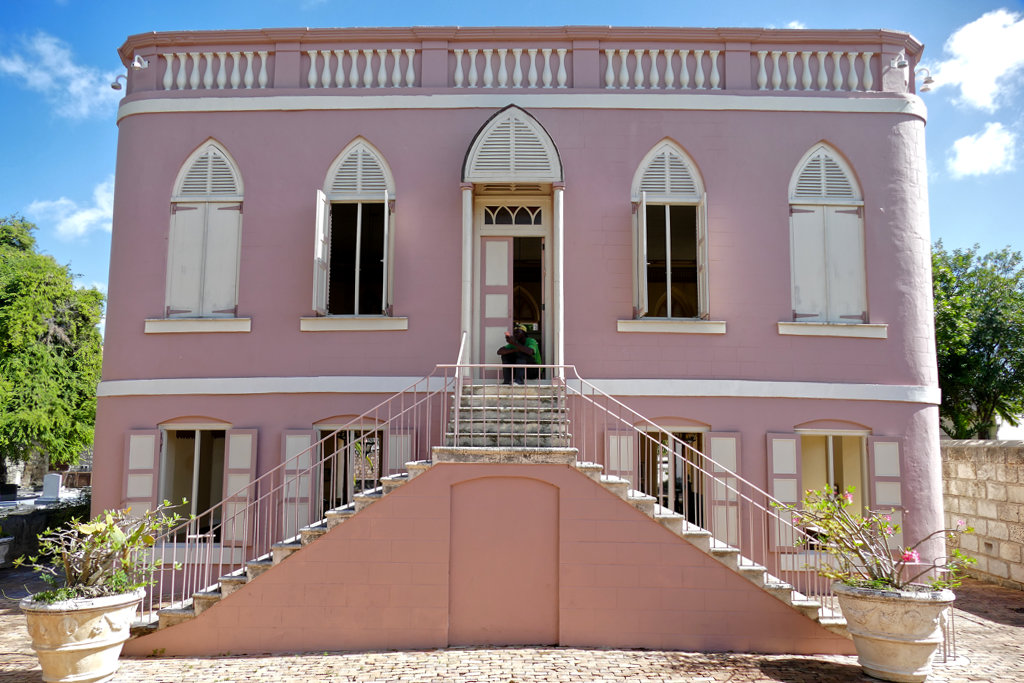
The synagogue and its ritual Mikvah bath were restored and are now part of a Jewish Museum complex, showcasing the community’s legacy in Barbados. It is open for tourist visits for an entrance fee of 25 BBD from Monday to Friday between 9 a.m. and 3 p.m.
Quakers in Barbados
The Quakers, on the other hand, arrived in Barbados a little bit later, around the 1650s. Despite resistance from the colonial authorities, the island became a paramount early Quaker center. However, Quakers were not only known for their pacifist beliefs. They were also opposed to slavery, which led to conflicts with the plantation owners. Hence, many members of this so-called Religious Society of Friends were persecuted, fined, or even expelled from the island.
Because the Quakers were denied building their own assembly houses due to their marginalized status, the Jewish community made the Nidhe Israel Synagogue available to them for gatherings. A remarkable example of interfaith cooperation.
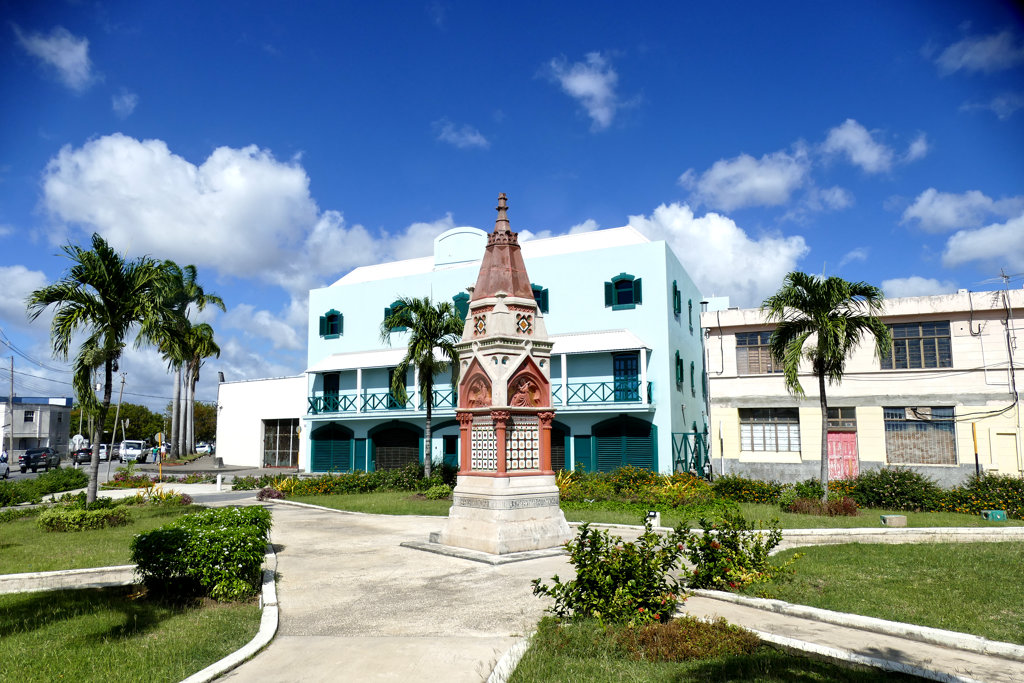
Despite these challenges, the Quakers endorsed abolitionist ideas in Barbados. Some converted enslaved people to their faith and advocated for their fair treatment. Yet, they did not immediately challenge the system of slavery outright. By the 18th century, the number of Quakers in Barbados had declined, with many moving to Pennsylvania and other parts of North America. There, they became leading figures in the abolitionist movement.
Garrison Historic Area
In addition to the Old Town, UNESCO has also declared the Garrison Historic Area in Bridgetown a World Heritage Site. It offers insights into the island’s colonial military history. Founded in the 18th century as the headquarters of the British West India Regiment, it developed into one of the largest British garrisons in the Caribbean. The area played a key role in securing British interests in the region, particularly during the height of the sugar trade.
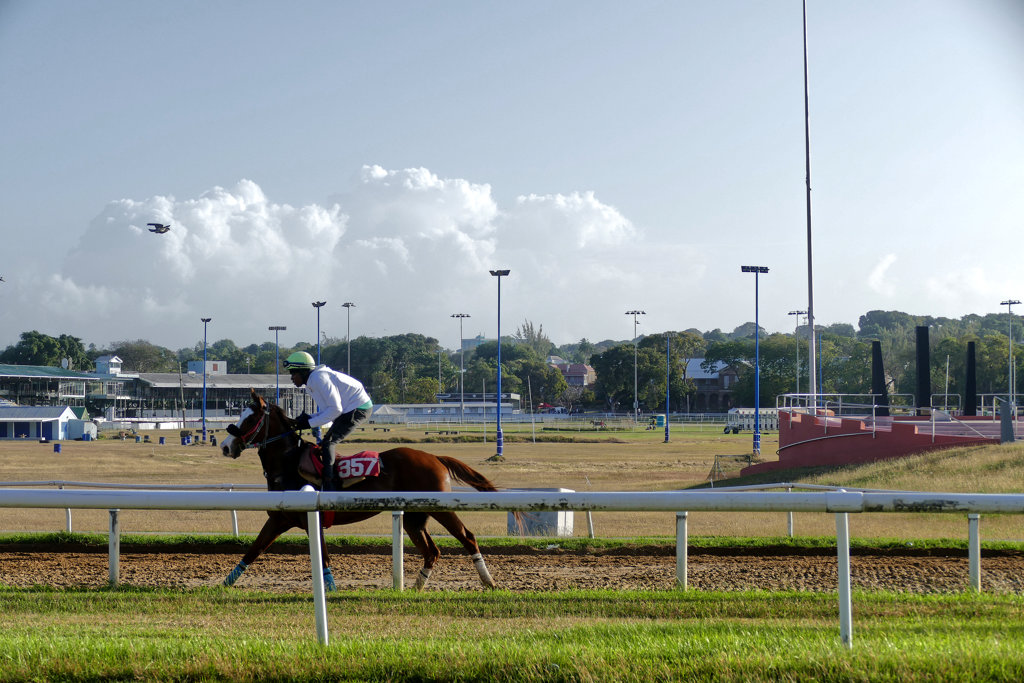
At the heart of the Garrison is the Garrison Savannah, originally a military parade ground. Today, it is the home of the Barbados Turf Club, where horse racing has been held since the 19th century. Several historic buildings surround the Savannah. One of the Garrison’s most notable features is its collection of historic cannons. Some of these date back to the 17th century and are considered among the most important cannons in the world.
Barbados Turf Club
The heart of Garrison Savannah is the Barbados Turf Club, which dates back to 1905. The club organizes horse racing year-round, attracting both local and international spectators. The racing season is divided into three main seasons: spring, summer, and winter. The Sandy Lane Gold Cup, held annually in March, is the most famous race and attracts top regional and international horses, jockeys, and trainers.
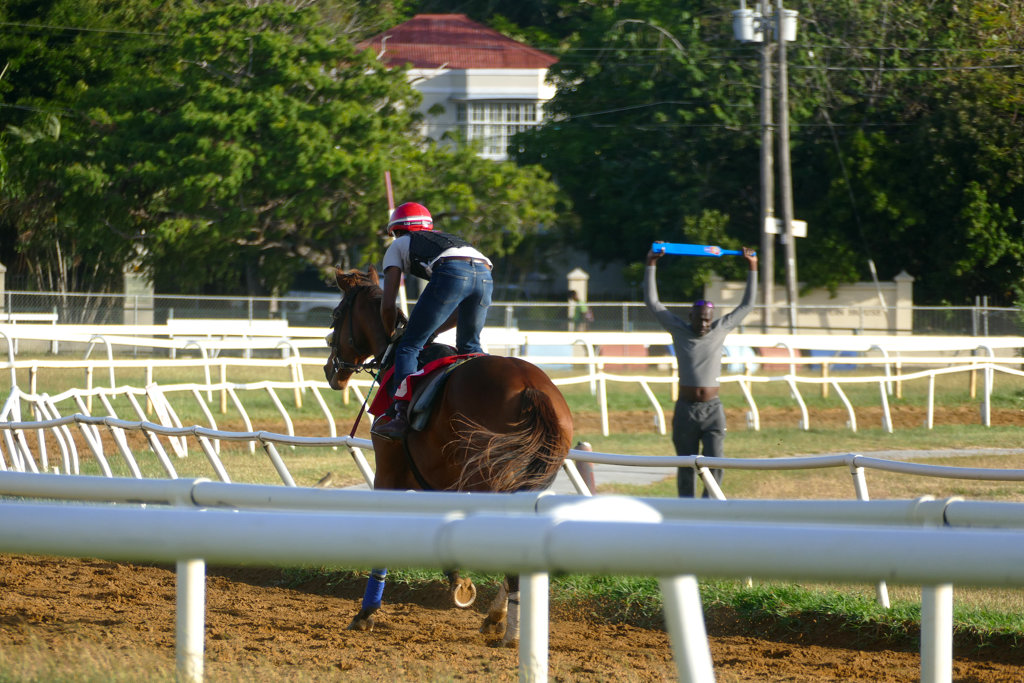
In addition to exciting races, the Barbados Turf Club also regulates the sport, ensures fair play, and sets high standards for the well-being of the horses. Race days at Garrison Savannah offer an exciting mix of sport, socializing, and Barbadian culture. Unfortunately, no races were taking place during my stay, but at least I already have something nice on my wish list for my next trip to Barbados.
Main Guard House
On the south side of the racecourse, the clock tower of the Main Guard House rises prominently into the sky. This historic military building was built in 1804 and served as the headquarters of the British West India Regiment. During colonial rule, it was central to military operations on the island.
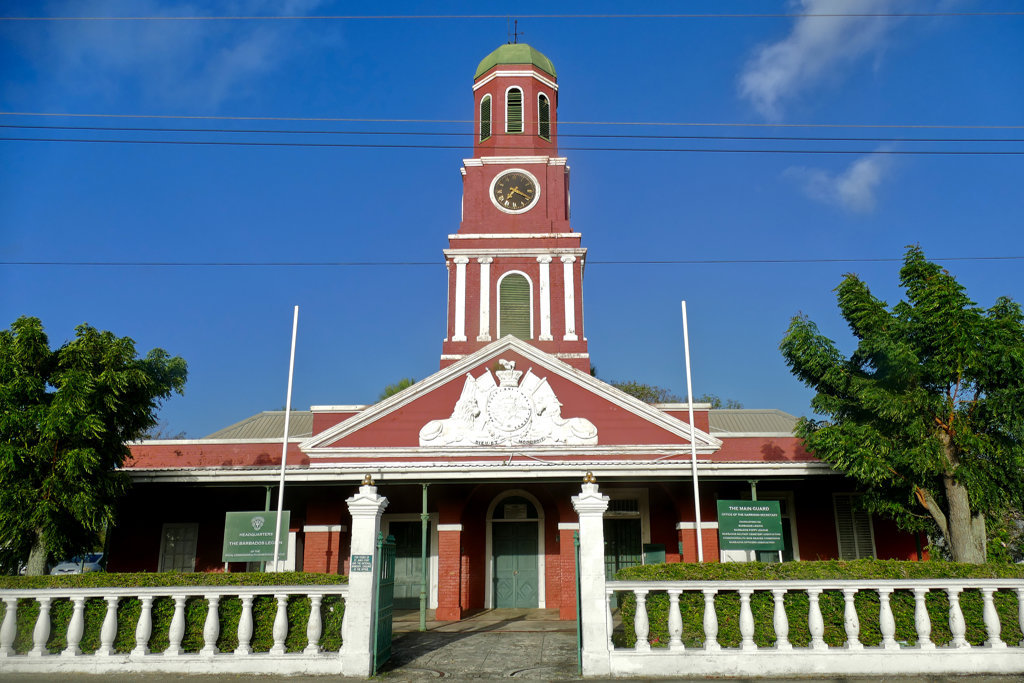
Its Georgian-style architecture, with its grand arcade, reflects the British colonial influence on Barbados. The building served as quarters for officers and to oversee the activities of the Savannah Garrison, the main parade ground and training area for troops stationed on the island.
Barbados Museum And Historical Society
The Barbados Museum and Historical Society, located in the historic Garrison district of Bridgetown, is the island’s most important museum and offers an in-depth look at Barbados’ rich history, culture, and natural heritage. Founded in 1933 in a former 19th-century British military prison, the museum has been dedicated to preserving and presenting the island’s history ever since.
The museum’s exhibits cover Barbados’ history from prehistory to the present day and include displays on the island’s indigenous peoples, their African heritage, colonial rule, slavery, and independence. A highlight is the collection of artifacts from the Indian settlers who lived on the island long before the arrival of Europeans. The African Gallery explores the impact of the transatlantic slave trade, while other sections explore Barbadian life during the colonial period, plantation agriculture, and social development.
The museum also features a natural history section showcasing the island’s unique flora and fauna, as well as an extensive collection of historical maps, prints, and artwork.
The museum is open from Monday to Saturday from 9 a.m. to 5 p.m. The general entrance fee is 12 BBD.
George Washington House
The George Washington House is the only place where George Washington lived outside of North America. In 1751, at the age of 19, Washington traveled to Barbados with his half-brother Lawrence. The brothers stayed in the house for about two months as Lawrence was seeking treatment for tuberculosis. Supposedly, Washington contracted smallpox during his stay, which later provided him with immunity during the American Revolutionary War.
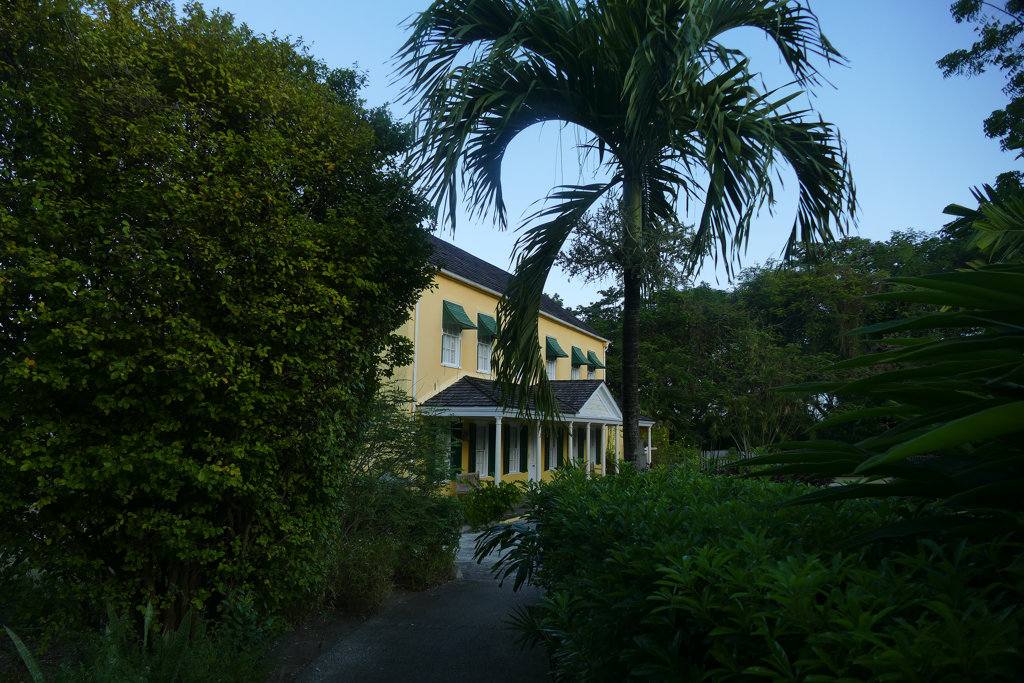
Before you get all wrapped up in sentimentalities about the future first president of the USA, here is some not-so-nice information: Born into a Virginia planter family, George Washington was not only a founding father but also a slave owner for most of his life. He inherited enslaved people at a young age and continued to acquire more human commodities through marriage and purchase. By the time of his presidency, Washington enslaved over 300 people at his Mount Vernon plantation!
I’d like to point out that despite publicly advocating for national unity and freedom, Washington actively participated in and benefited from slavery. He enforced strict control over his enslaved laborers and punished them harshly. Even as president, he abused laws to keep slaves in bondage, secretly moving them across state lines to avoid Pennsylvania’s gradual abolition law.
The so-called George Washington House has been restored and is now a museum. It provides insight into 18th-century colonial life. Also, beneath the house lies a network of tunnels built by the British military, which once served as an escape route and water drainage system. Today, visitors can explore parts of this underground passageway.
The George Washington House is open every day from 9 a.m. to 4 p.m. The general entrance fee is a whopping 40 BBD.
All About Rihanna
Thanks to Bob Marley, who made reggae famous worldwide, the island of Jamaica has always held a particularly prominent status among the Caribbean islands. They largely overshadowed all the other islands, at least in terms of cultural exports.
This changed all of a sudden in 2005 as Robyn Rihanna Fenty’s first single Pon de Replay took the international charts by storm.
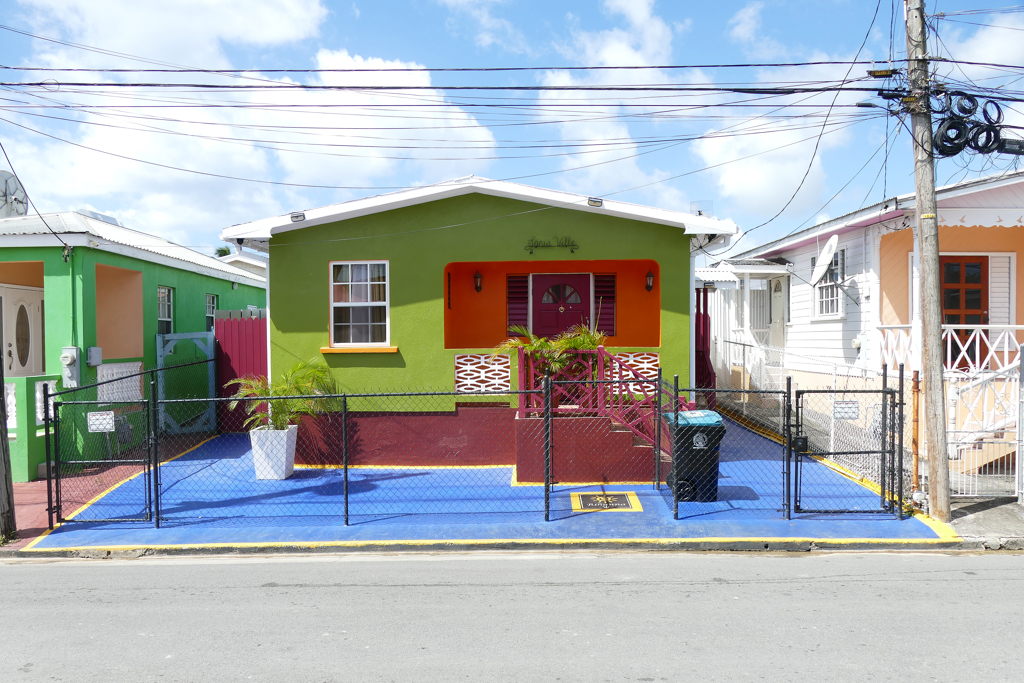
Rihanna was born in Barbados in 1988. Her musical journey began when producer Evan Rogers discovered her on his visit to the island in 2003. He forwarded a demo tape to Jay-Z, who immediately signed her to Def Jam Recordings. Over the following years, she became one of the most successful artists in the world. To date, Rihanna has sold over 250 million records. With nine Grammys, she is one of the most successful music artists of all time.
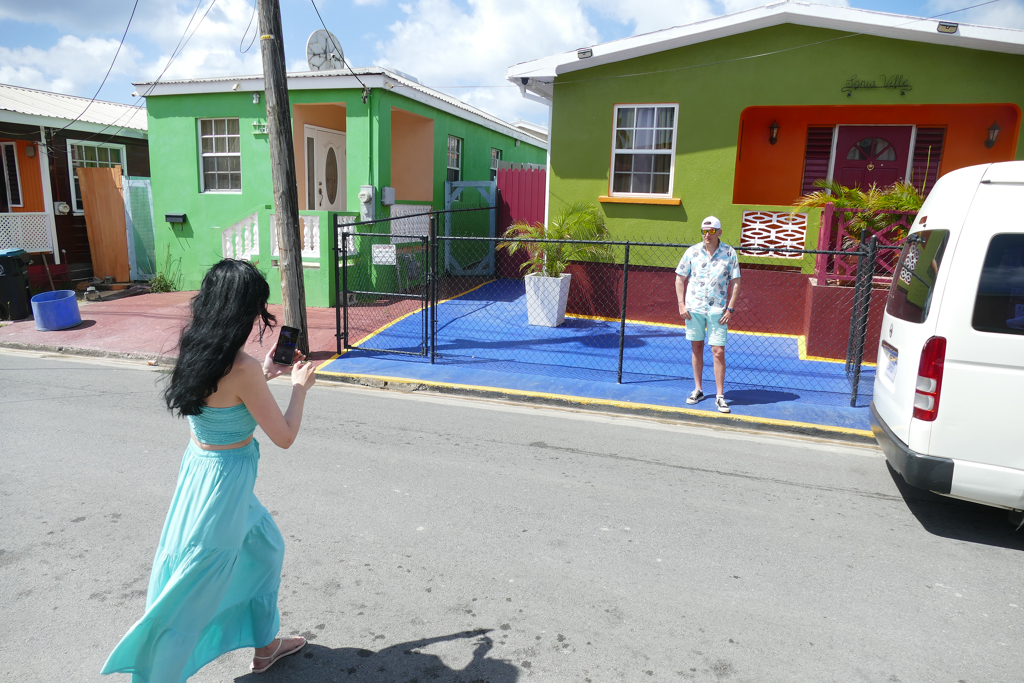
Hence, what Bob Marley did for Jamaica, Rihanna has done for Barbados: with her music, she put the island on the map for the whole world to see.
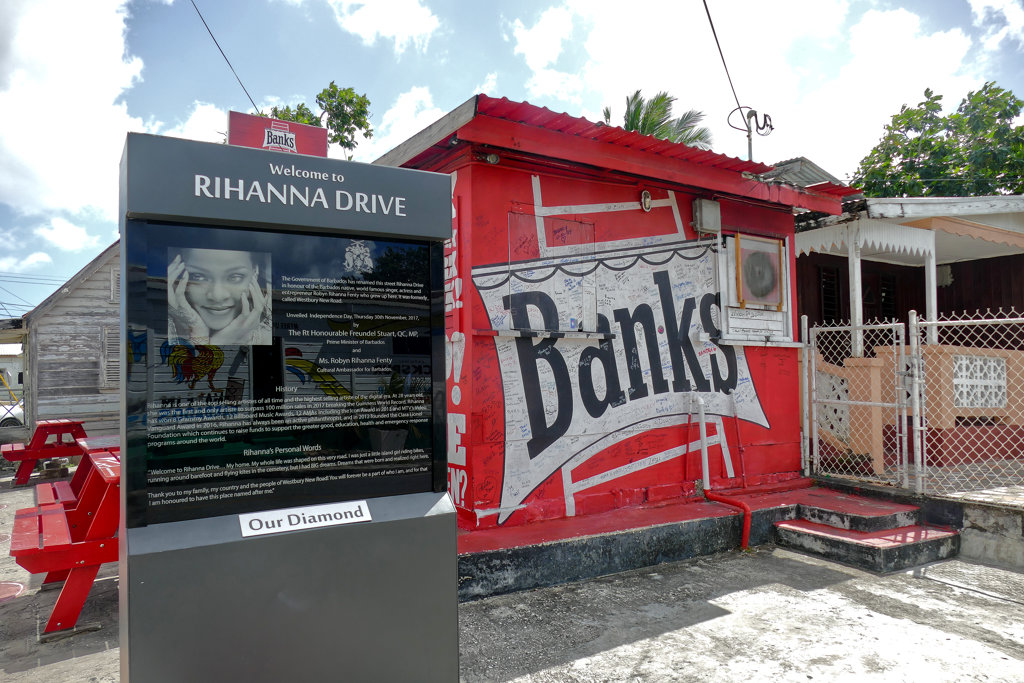
However, this is by no means the sole determining factor for Rihanna’s current fame. As a successful entrepreneur, she has overcome and revolutionized fashion and beauty standards with her Fenty brand: black’n’curvy is at the label’s forefront.
It Did Pay Out
She has an estimated net worth of 1.4 billion US dollars, which makes her one of the richest musicians in the world. Yet, Rihanna shares her wealth with the community that made her. Through her Clara Lionel Foundation, she makes significant contributions to education, social justice, environmental projects, and other charitable projects.
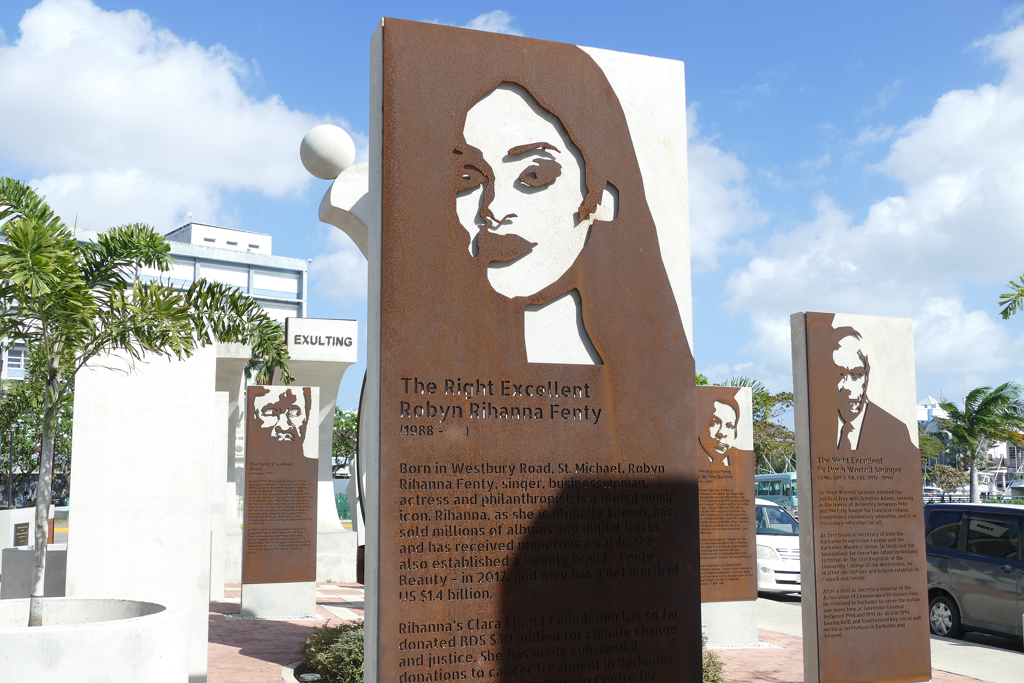
This earned her the official appointment as Barbados’ Ambassador for Culture and Youth in 2018. Three years later, when Barbados became a republic, she was also awarded the title of National Hero.
Carlisle Bay
What makes Bridgetown stand out even among Caribbean cities that aren’t dumps is its proximity to one of the best beaches in all of Barbados. Carlisle Bay stretches for about 2.5 kilometers along the island’s southwest coast.
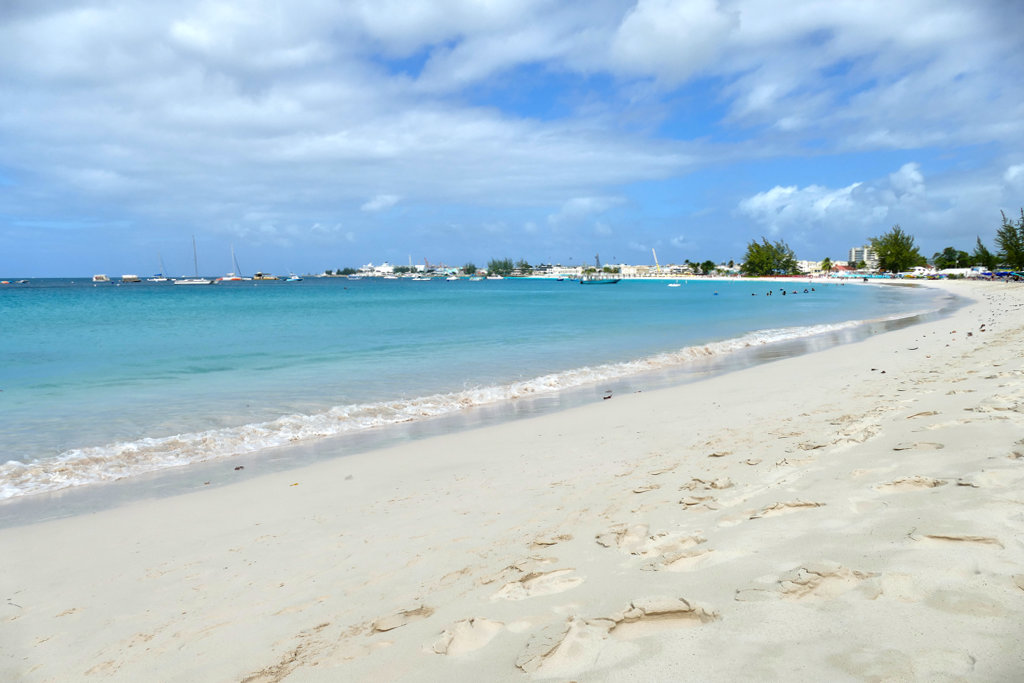
Its white sand, turquoise waters, and numerous shipwrecks make the bay a popular spot for swimmers, divers, and snorkelers. It lies west of the city and can be reached in minutes on foot from the historic center.
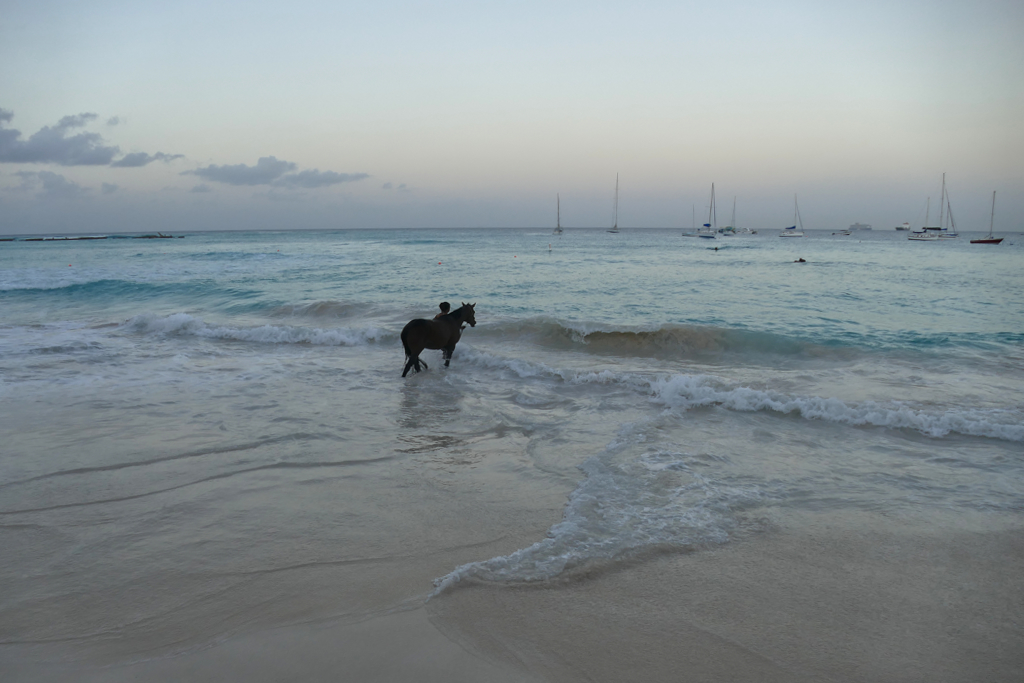
Carlisle Bay is best explored from its southern end. Here, the day begins early, around 5 a.m. Then, the racehorses from the nearby Garrison Savannah are taken to Pebbles Beach for a swim.
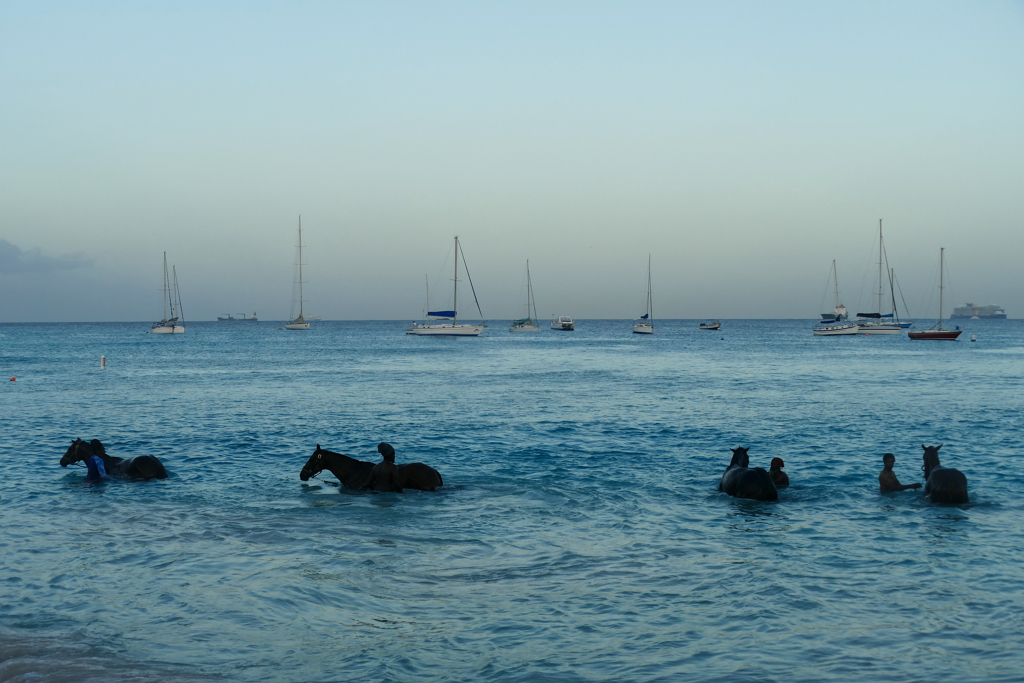
The swimming horses of Pebbles Beach are a must-see. But don’t expect it to be a particularly serene undertaking. By the time I got there at approximately 6 o’clock, there were already around 100 onlookers on the beach. A savvy vendor was serving up fresh coffee under a beach tent, which was excellent marketing, considering the time of day.
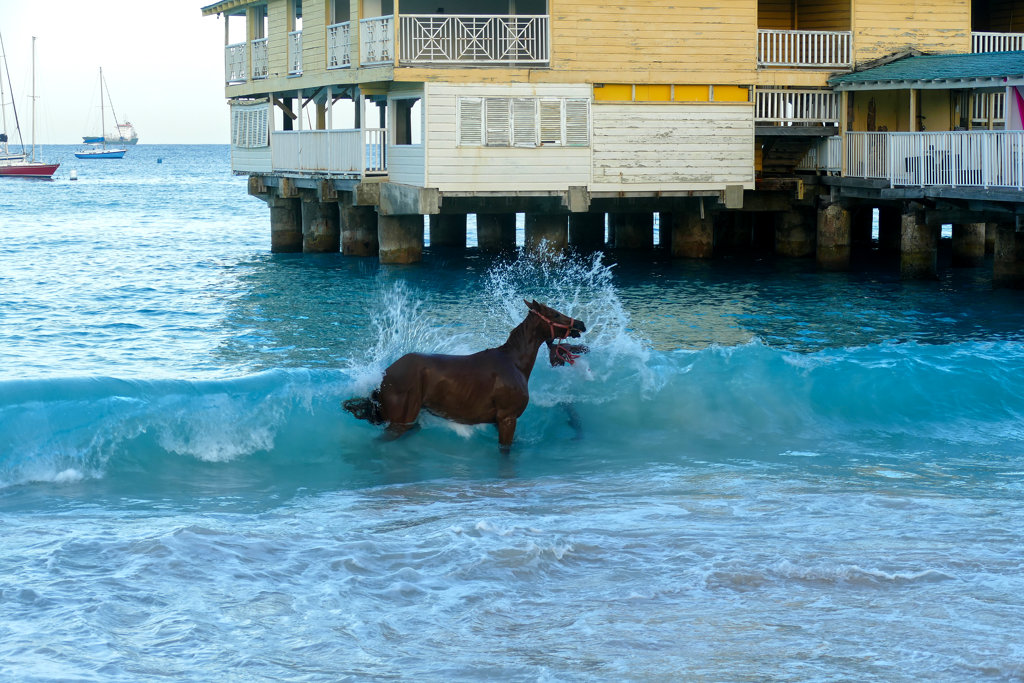
In contrast to the empty streets on the way to Pebbles Beach at the crack of dawn, there was quite a lot going on on this shore. Regardless, while it’s not a meditative or mystical experience, it’s absolutely beautiful to watch the horses taking their bath in the gentle twilight of the slowly rising sun. I’ve marked the exact location of the horses’ swimming spot on the map below.
Life is a Beach
Of course, later in the day, two-legged creatures also take a dip in the crystal-clear waters of Carlisle Bay.
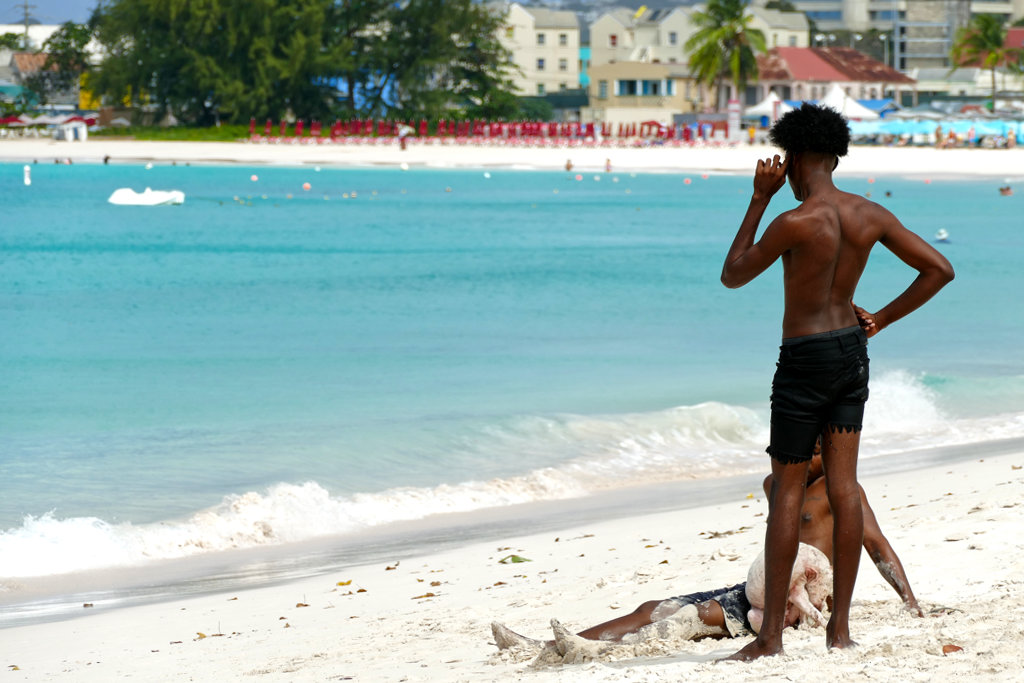
Along the crescent-shaped bay, you can rent lounge chairs and umbrellas in some areas. However, you’ll also find long stretches that are not organized. Here you can spread out your beach towel as you please. If you don’t just want to sunbathe, swim, and snorkel, you can also rent a jet ski or take a snorkeling trip directly from the beach.
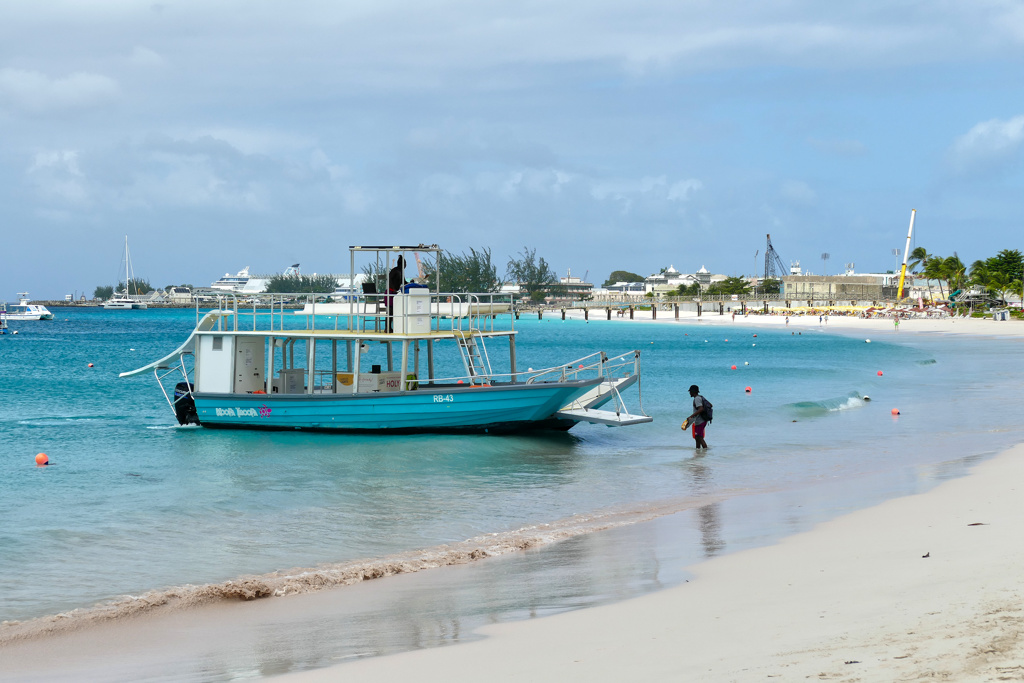
Although the shipwrecks are only about 50 to 400 meters from the shore, you should be extremely careful if you want to swim there on your own. You should always expect dangerous undercurrents in the waters around Barbados, and keep in mind that 50 meters in the open sea is nothing like 50 meters in your local pool. Swimming can quickly become unexpectedly strenuous. In fact, during my time in Barbados, a tourist drowned while snorkeling with sea turtles in Carlisle Bay. An organized snorkeling trip by boat or catamaran costs around 30 US dollars. I daresay this is a pretty small amount as we are talking about saving your life.
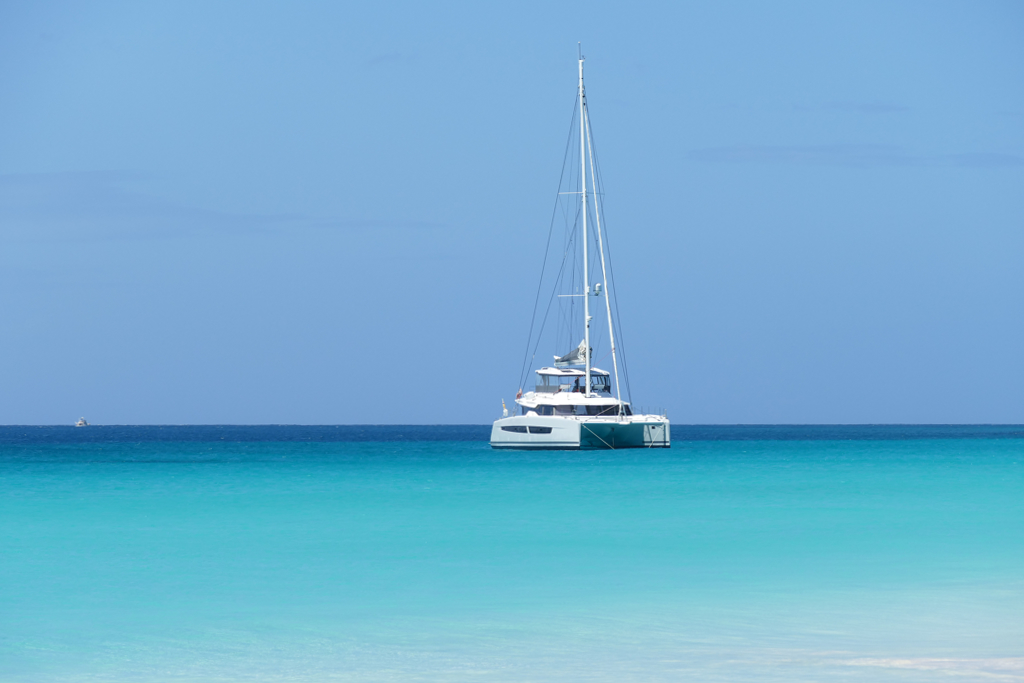
I certainly didn’t want to go snorkeling alone, hence, I treated myself to a one-day all-inclusive package.
Welcome to the Club
At the northern end of Carlisle Bay, just a few minutes walk from Independence Square, is the Boatyard Beach Club.
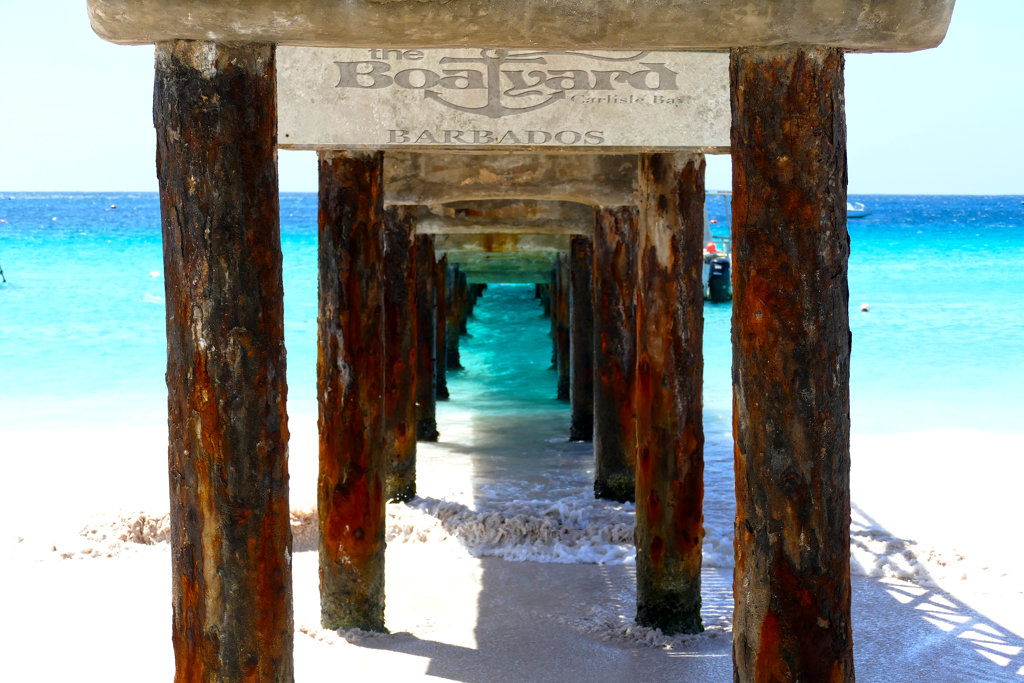
For an entrance fee of 70 BBD, you can spend a carefree day on their grounds. In addition to sun loungers and umbrellas, the club has changing rooms, restrooms, and freshwater showers. You can rent a locker for your valuables, allowing you to enjoy a carefree day at the beach.
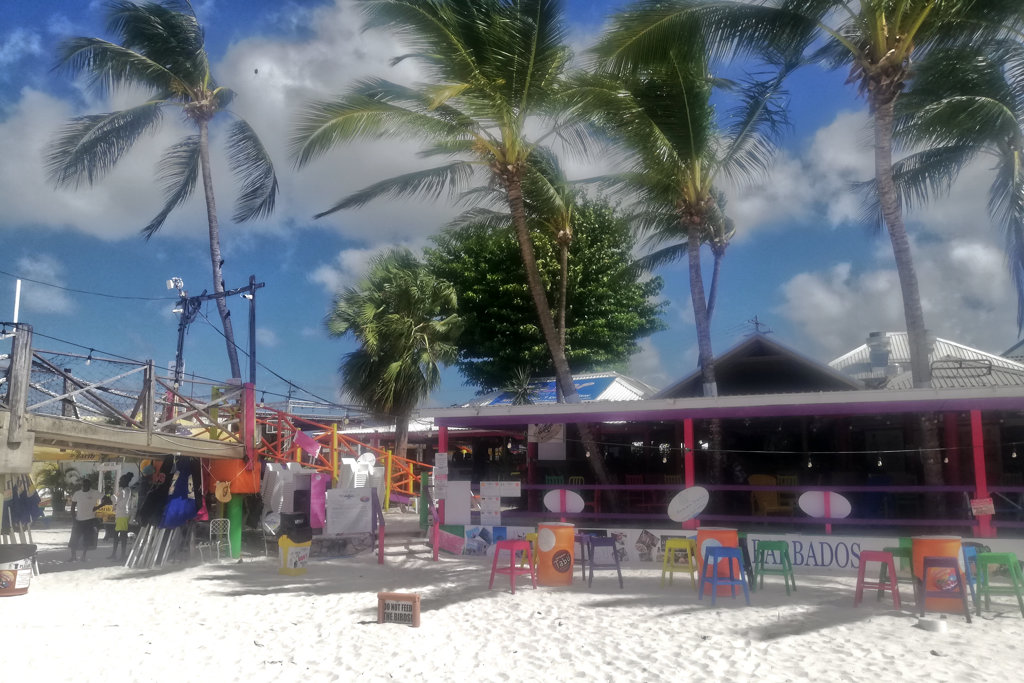
Also included in the entrance fee is a snorkeling trip and a 40 BBD food voucher. The prices at the bar are certainly not bargains, but they’re not exorbitant either. I got a small lunch and two drinks for my 40 BBD credit. Overall, I think the Boatyard offers absolutely reasonable value for money.
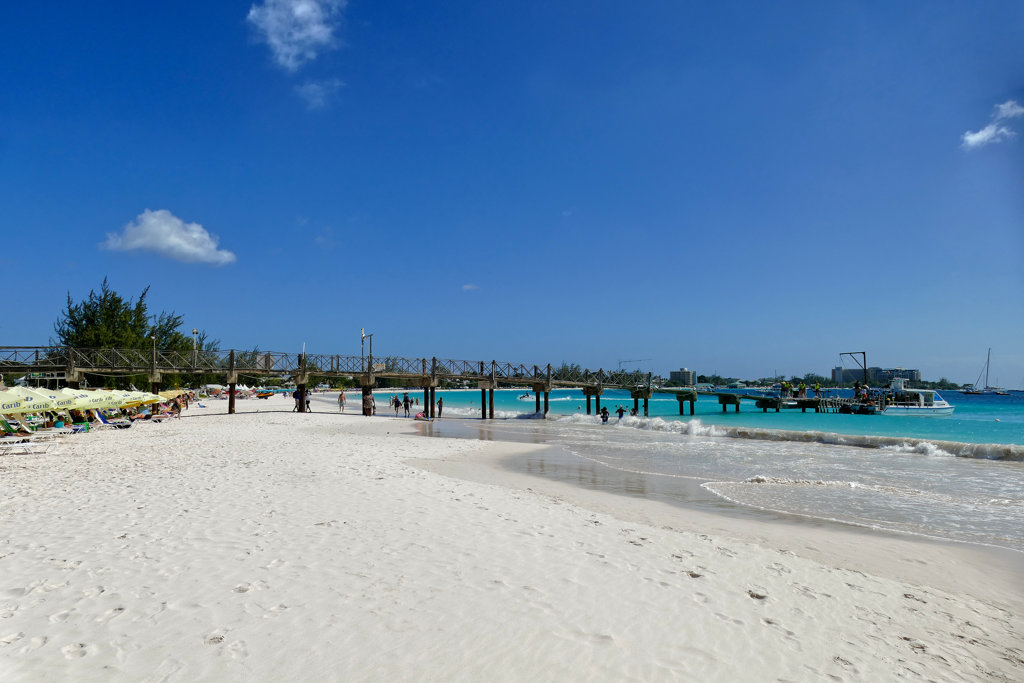
However, the package I’m describing here aims at guests staying on the island. There’s also a package for cruise ship guests. They don’t get a food voucher, but the shuttle to and from the cruise ship is included, and they get a complimentary welcome drink.
Generally speaking, I’m not a big fan of organized all-inclusive vacations. Nevertheless, I would do it again and zoom out for a day and relax with the all-inclusive package at the Boatyard.
My Tip
To avoid too large crowds, I would recommend either choosing a day when there are no cruise ships in Barbados, or arriving as early as possible to ensure you get a lounge chair. Also, try to get on one of the first snorkeling trips.
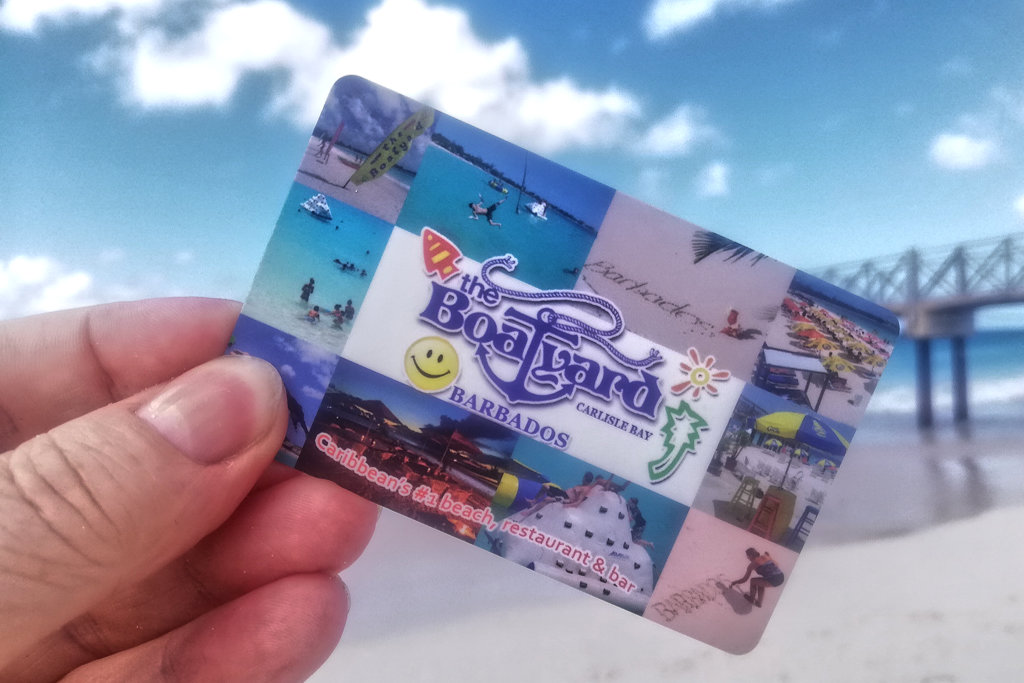
The club is open daily from 9 a.m. to 6 p.m. Be sure to bring a valid photo ID if you’re not coming from a cruise ship, or they won’t let you in.
Practical Information
How to Get There And Around
All the places and landmarks that I’m introducing in this post are within walking distance of up to half an hour from each other. This being said, I’d like to point out that Barbados, including the city of Bridgetown, has a pleasantly comprehensive public transportation system that makes exploring convenient for everyone. The net comprises government-operated buses, privately owned minibusses, and shared cabs, so-called ZR vans. The standard fare on either of these vehicles is 3.50 BBD per trip, no matter how far you travel. You can pay in local currency or in US Dollars. Nevertheless, most of the time, you’ll get change in Barbados Dollars.
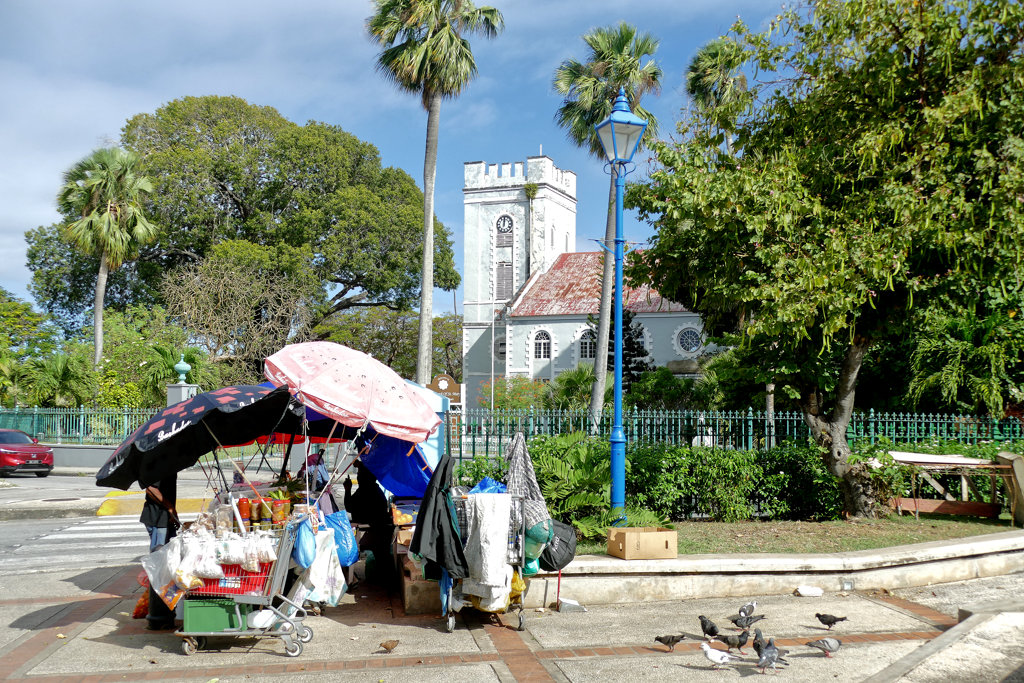
Buses operated by the Barbados Transport Board are big’n’blue, minibusses are orange, and ZRs are beige with a brown stripe. Although they all charge the same fare, there are some important differences. While the driver or collector at the privately-operated coaches will give you change, you have to put the exact amount into the big bus’ money box, and you’ll get nothing back. Hence, make sure to always have enough small change on you.
Flexibility
The blue buses stop only at designated stops, while you can ask at least the ZR drivers to let you get off where it’s most convenient for you. Also, while government buses have fixed schedules, minibusses and ZR vans operate far more flexibly and in very short intervals. Most of the time, I waited less than two minutes for a bus!
On the other hand, though, the privately organized means of public transportation do not operate on weekends on certain less-frequented routes. Take that into consideration when planning excursions by public bus.
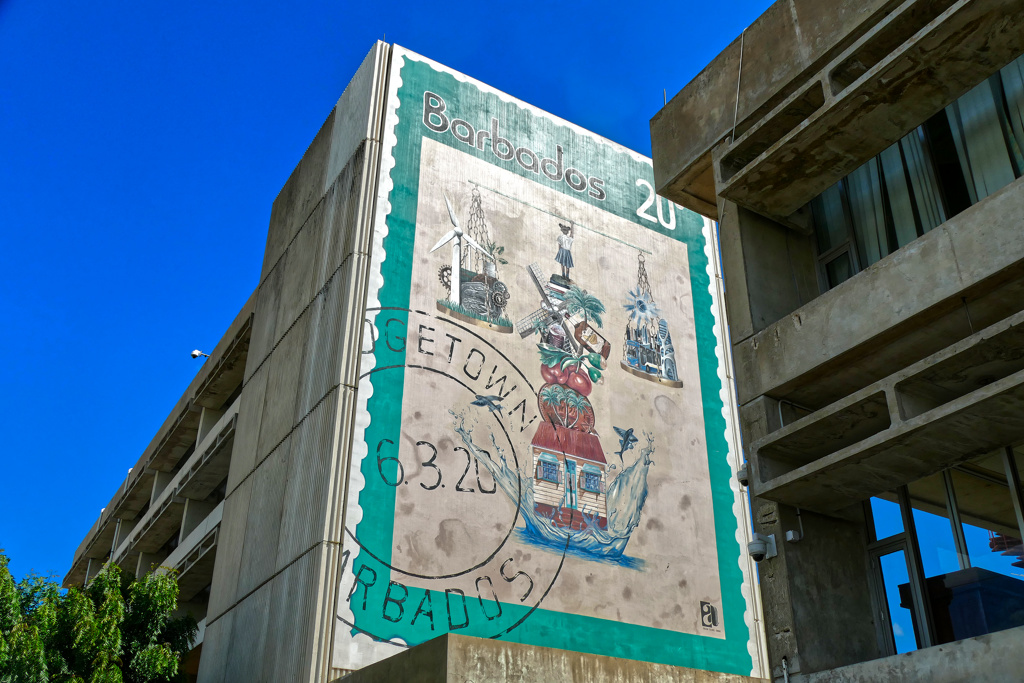
Knowing all this is fine and dandy, however, it’s almost impossible to figure out a schedule online. The Transport Board’s website sorts the buses according to numbers. That’s okay for guiding a true connoisseur of the system, but not a visitor who needs basic directions. Obviously, minibusses and ZRs are not taken into account at all. However, Bajans are incredibly nice people and happy to assist the lost visitor.
Unfortunately, my all-time go-to app, Google Maps, is also useless when it comes to public transport in Barbados. Hence, I actually found out that the Apps Rome2Rio as well as Moovit are the best tools for figuring out bus connections.
Organized Trips
Although the public bus system in Barbados is not bad at all, there are places on the island that are more difficult to reach. Especially if you are on the island only for one or two weeks, joining an organized day tour is a great option to save time and still see it all. Also, you’ll presumably need to join an organized tour if you want to engage in activities on the water like sailing or snorkeling from a boat. Therefore, check out these organized trips’n’tours*:
Where to Stay
Since tourism is one of Barbados’ main industries, there are many kinds of accommodation to choose from. However, most visitors come on a standard holiday package which includes a stay at one of the large resorts. Obviously, this kind of tourism drives up prices. Finding budget-friendly yet convenient accommodation in Barbados is not always easy.
While this time, I stayed at a very comfortable apartment on the south coast, not far from Oistins, I might opt for accommodation in Bridgetown on my next visit. This way, I’ll be close to the island’s best infrastructure, including various bus terminals as well as one of the best beaches Barbados has to offer. On this map, you find a choice of lodging options for all needs’n’budgets*:
What to Eat
Bajan food is a vibrant fusion of African, Caribbean, British, and Indian influences. Rooted in fresh seafood, locally grown produce, and a rich blend of spices, Bajan dishes offer a unique and flavorful experience. Especially in the capital, you have the opportunity to try out all the specialties – and often at a much cheaper price than in the holiday areas in the south and along the west coast.
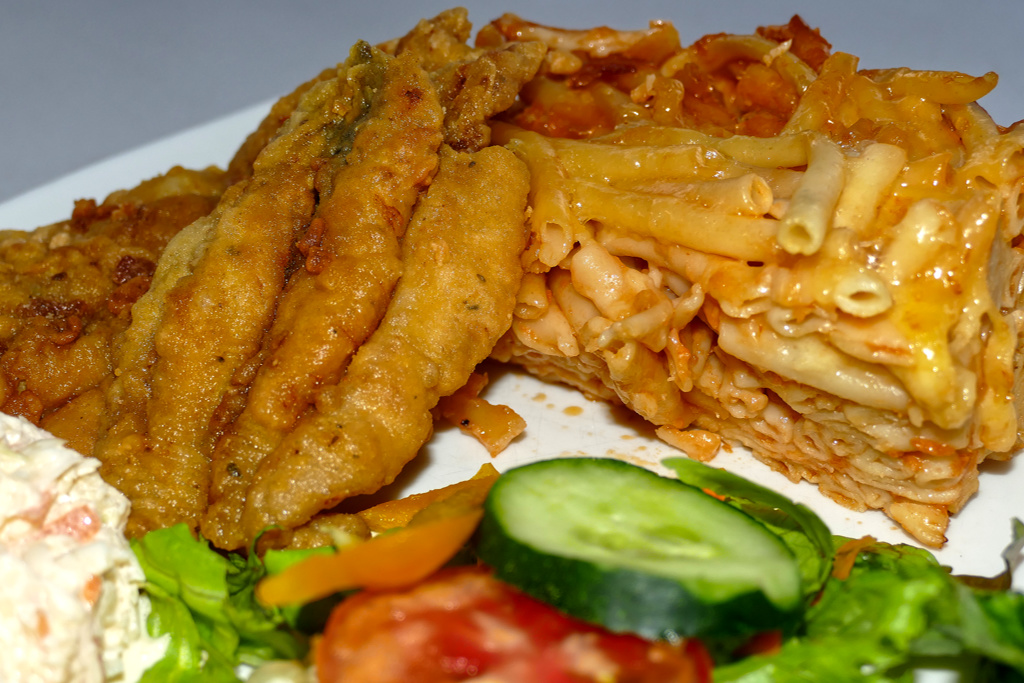
Among the must-tries is the national dish, Flying Fish and Cou-Cou. Here, delicately prepared flying fish is accompanied by a polenta-like mixture of cornmeal and okra. Albeit, comfort food lovers will eat their flying fish rather with a side of Macaroni Pie.

Another local favorite is Pudding and Souse, a traditional dish featuring pickled pork paired with spiced sweet potato pudding. Hearty meals like Pepperpot, a spicy stew made with pork, beef, and a medley of spices, showcase the island’s love for bold flavors.
Street Food
Barbados is known for its street food. Vendors serve deep-fried, crispy Fish Cakes with a generous drizzle of Bajan pepper sauce. For a crunchy snack, Breadfruit Chips, similar to potato chips but with a more nutty flavor, are a delicious local treat. Cutter Sandwiches, made with salt bread and stuffed with fillings like flying fish, ham, or cheese, are a quick and satisfying snack. The most delicious of these wonderful treats is often sold straight from the back of a pickup truck on the side of the road.
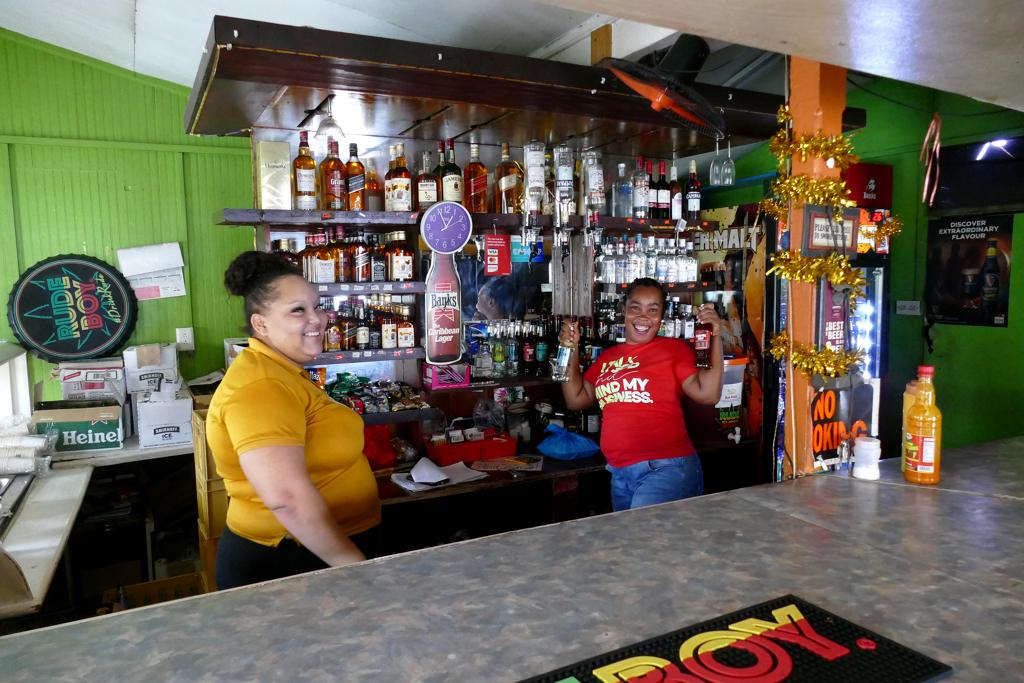
In addition to traditional Bajan cuisine, there are also culinary imports from the other Caribbean islands, such as Jerk Chicken from Jamaica and Buljol from Trinidad. Also, a highly popular dish is Roti. This dish, based on Indian cuisine, consists of a soft flat bread that is then filled with curries.
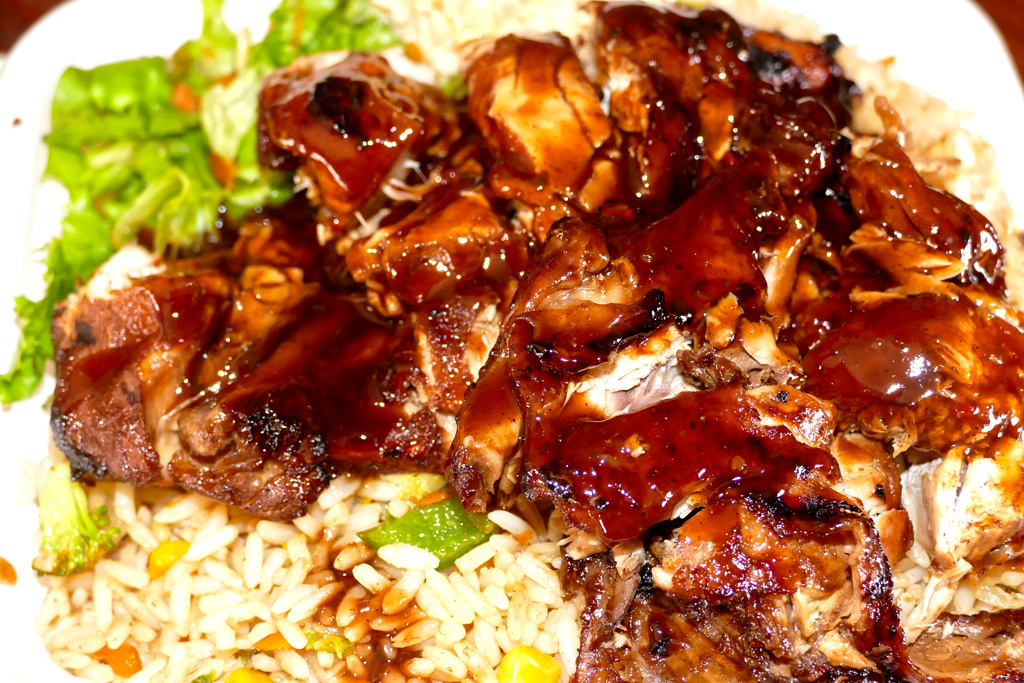
Finally, you can also get Italian food like pizza and Mexican food like tacos in many eateries across the island.
With such a rich selection of exciting dishes, I just can’t wrap my head around how much US fast food has made its way to the island. Why do people come to Barbados when they want to eat at Burger King or KFC? Have I missed something? Isn’t part of travelling to try local dishes? Obviously, not for everyone. However, if you can’t do without burgers and fries, at least try those from Chefette, a local fast-food chain that stands out as a homegrown favorite. Its blend of local flavors and commitment to the community has solidified its status as a Barbadian institution.
What to Drink
No culinary experience in Barbados is complete without sampling its drinks. Mauby, a refreshing local drink made from tree bark, has a unique bittersweet taste, while Sorrel Punch, made from hibiscus flowers and spices, is a festive favorite. Obviously, local rum – whether pure or in a mixer – is a must.
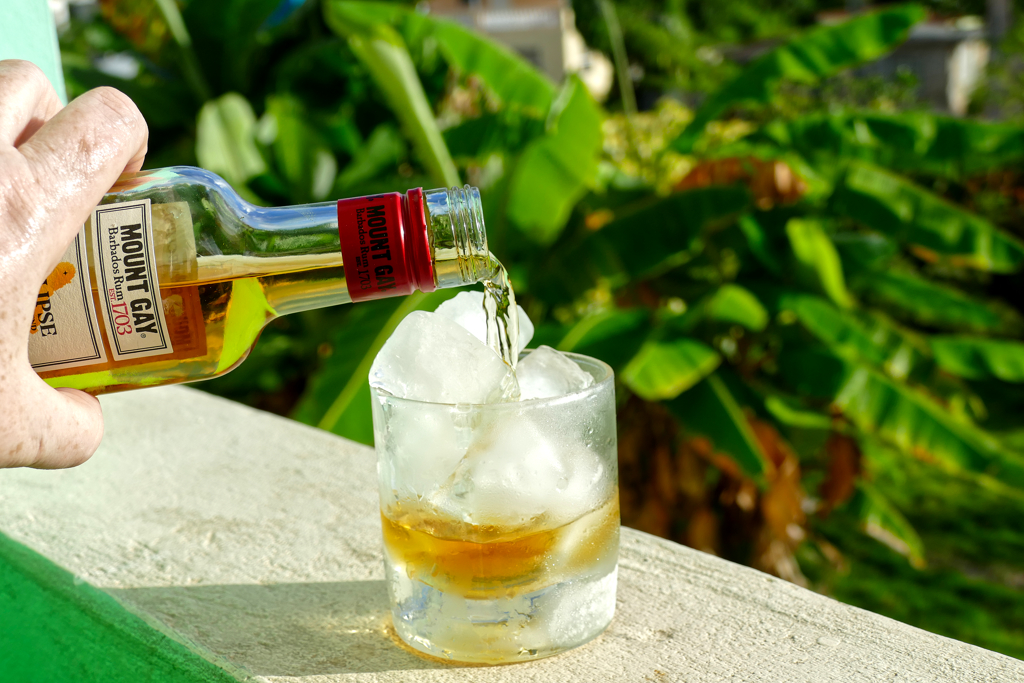
Last but not least, the info that Barbados’ tap water is drinkable. As a matter of fact, I find it quite ironic that many visitors from the US, where the tap water tastes as chlorinated as if you are drinking straight from a swimming pool, are suspicious of the quality and prefer to buy the overpriced bottled water.
Don’t do that. Bring your drinking bottle and fill it with tap water. It’s free. It’s good for you. And it’s also good for the environment as we save those nasty plastic bottles.
Connection and Communication
First things first: As all accommodations and many restaurants, landmarks, and other places offer free Wifi, I daresay that you don’t need a data plan. Since it was my first time in Barbados, I was travelling solo, and exploring the island by public transport, I simply felt more at ease having access to the internet while being on the road. Especially since you can hardly check bus schedules and connections online, it’s sometimes nice to know where exactly you are while you’re on the go. Or you might want to quickly check whether a particular restaurant is open. All this is practical, yet, if I return to Barbados, I probably won’t spend money on a local SIM card again.
Regardless, I was very happy with my Digicel card. I opted for data only since I had no intention of making phone calls. Also, online calls are a valid alternative.
The SIM card cost me 15 BBD, and as I chose a two-week data plan including 12 GB, I paid another 55 BBD. However, they have many different plans, from 500 MB for one day for 5 BBD to 20 GB for 30 days, which sets you back 85 BBD. You can check out all these options on their website.
However, there is also a prepaid Visitor plan including calls, SMS, and data with the following key data:
| Days | Calls Anywhere | SMS | Data | Price |
| 7 | 250 minutes | 100 | 8 GB | 60 BBD |
| 10 | 150 minutes | 500 | 12 GB | 80 BBD |
| 30 | 800 minutes | 200 | 30 GB | 200 BBD |
Don’t forget to make sure that your phone is unlocked so that you can insert any SIM card. Alternatively, you can use an eSIM, obviously
Map
This map shows where all the intriguing places I’m introducing in this post are located.
Clicking on the slider symbol at the top left or the full-screen icon at the top right will display the whole map, including the legend.
Obviously, my visits to Bridgetown were just one of many amazing activities I engaged in during my stay in Barbados. To learn about other places, go to my post Typically Tropical: Best Places Not to Miss on the Amazing Island of BARBADOS. There, you’ll also get much more information and tips that will make your own trip to the island smoother and more fun.
Need some recommendations on which beaches to visit and how to get there? No problem, in my post Beyond Your Imagination: The Best Beaches in Barbados You Can Easily Visit by Public Bus, I have you covered!
Pinnable Pictures
If you choose to pin this post for later, please use one of these pictures:
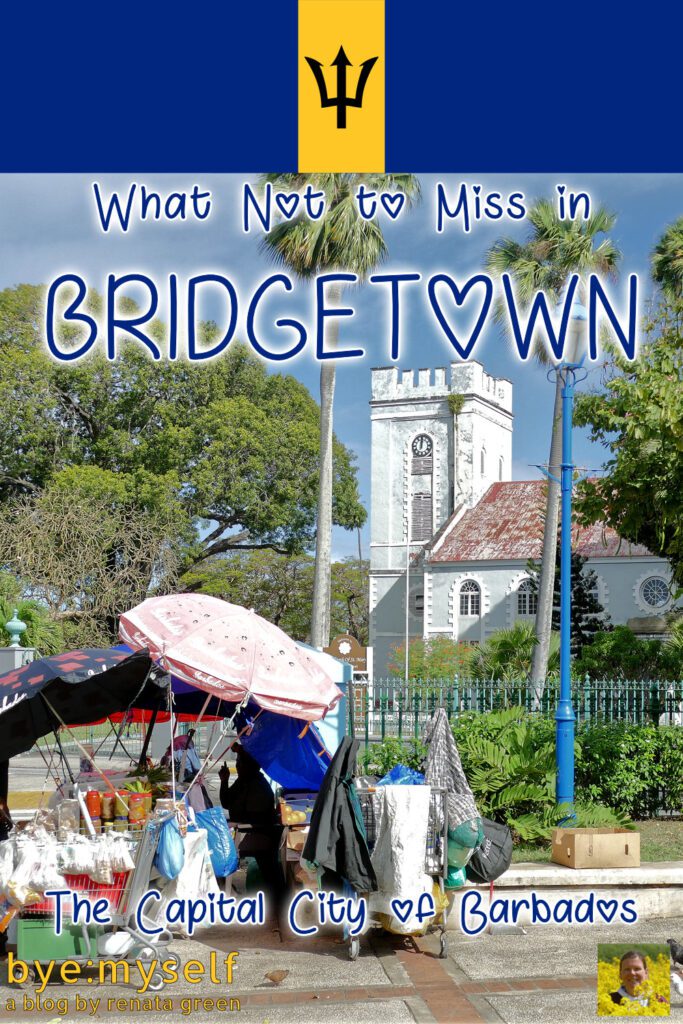
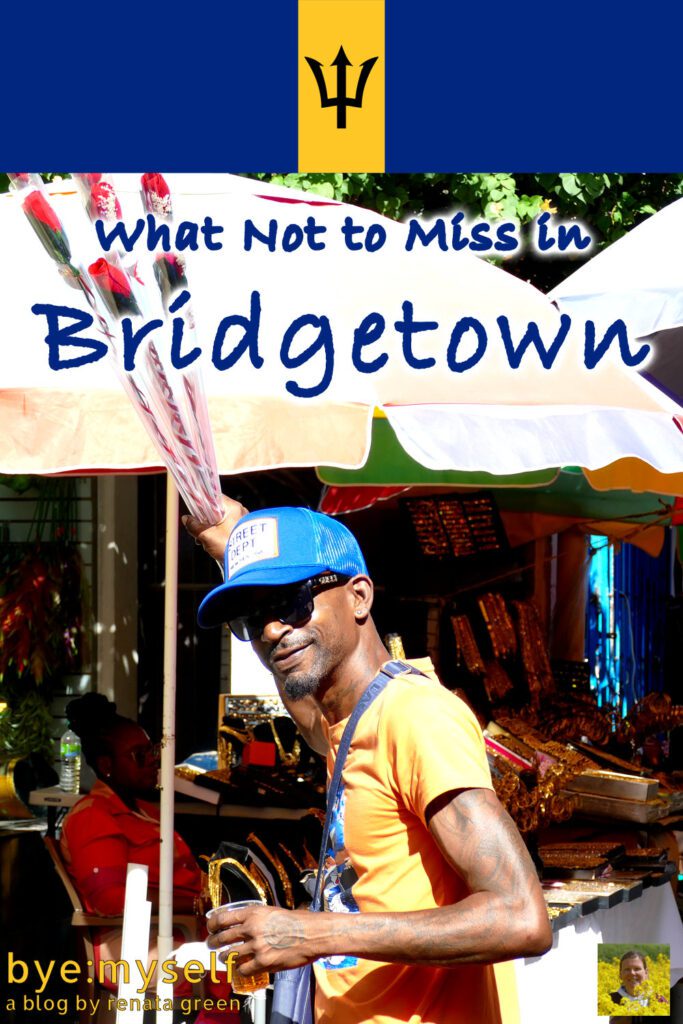
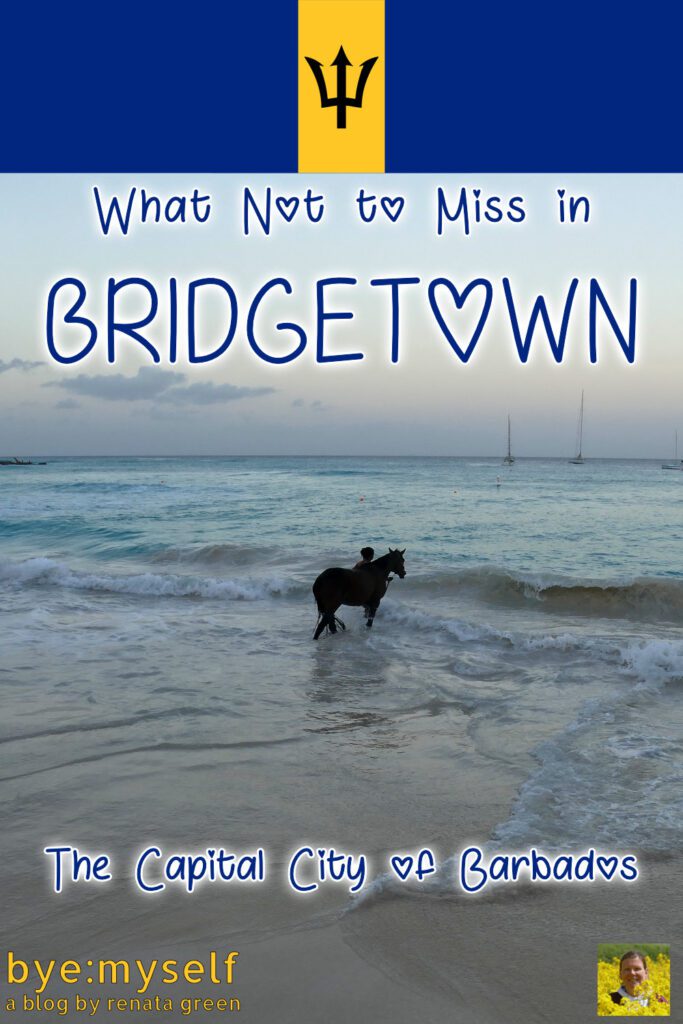
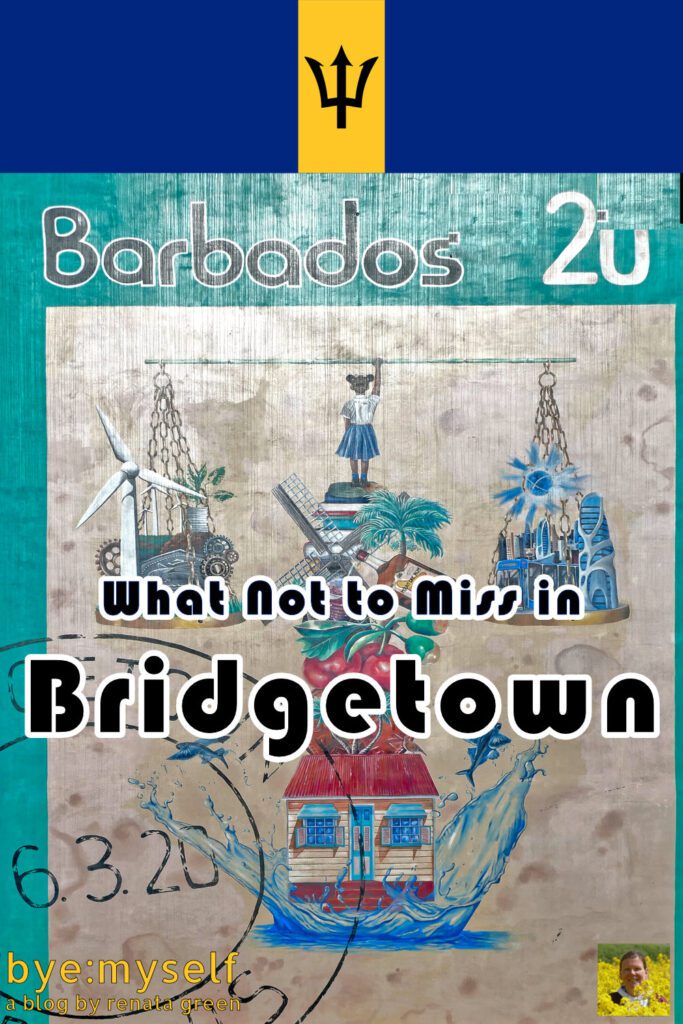
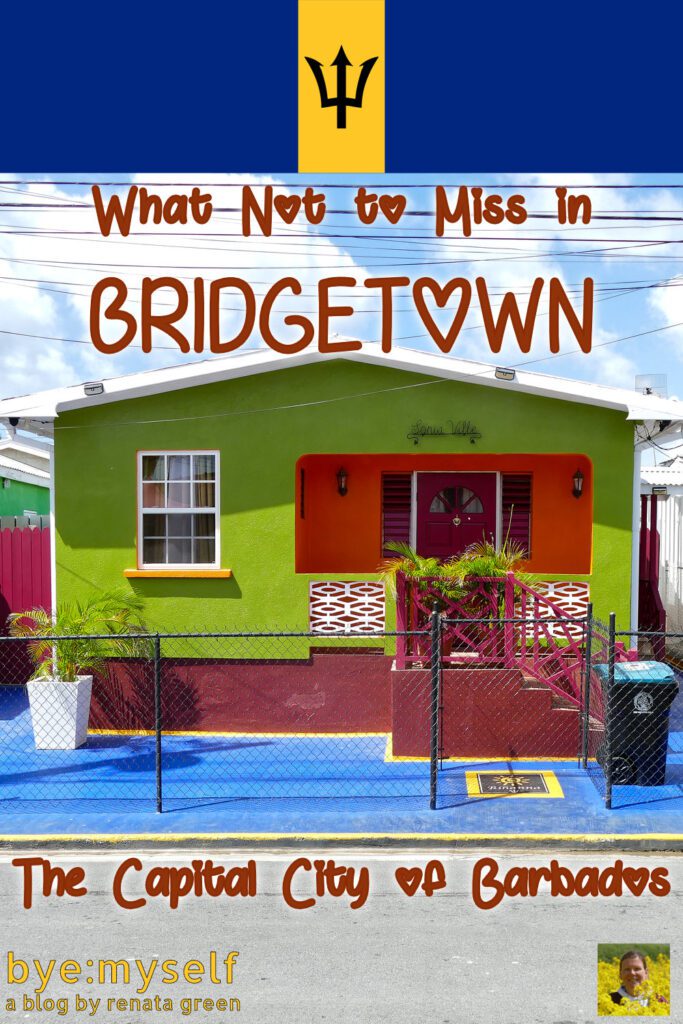
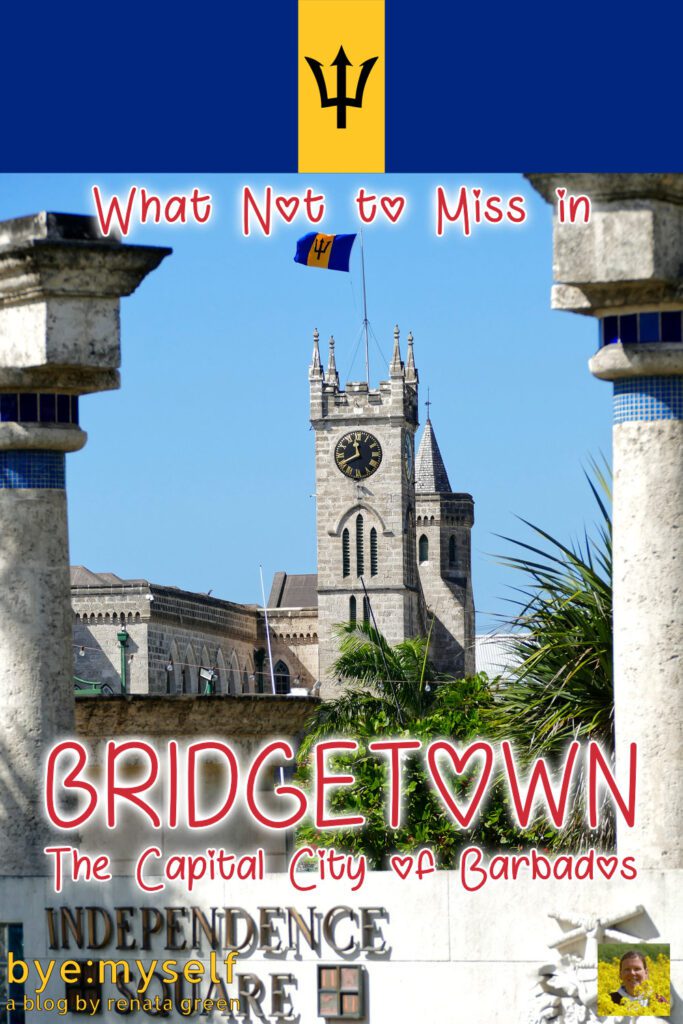
Did You Enjoy This Post? Then You Might Also Like These:
ARUBA: The Powerful Murals of San Nicolas
Two Days in CARTAGENA
As Easy As ABC: Island Hopping Between ARUBA, BONAIRE, and CURACAO
Best Places to Visit in Grand Terre, the Eastern Wing of GUADELOUPE (also by public bus)
What Not to Miss in BRIDGETOWN, Barbados’ Exciting Capital
Best Places to Visit in Basse Terre, the Western Wing of GUADELOUPE (also by public bus)
GUADELOUPE: Complete Guide And Perfect Itineraries (also for travels by public bus)
Beyond Your Imagination: The 15 Best Beaches in Barbados You Can Easily Visit by Public Bus
* This is an affiliate link. Hence, If you book through this page, not only do you get the best deal. I also get a small commission that helps me run this blog. Thank you so much for supporting me!
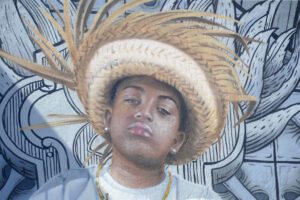
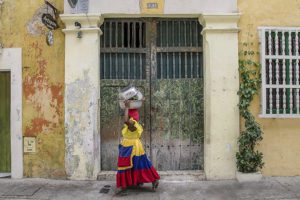
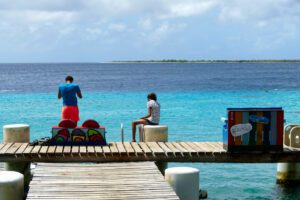
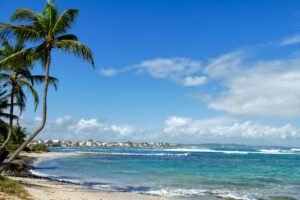
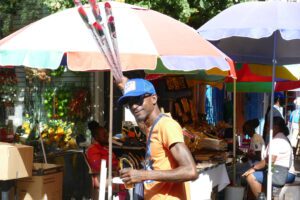
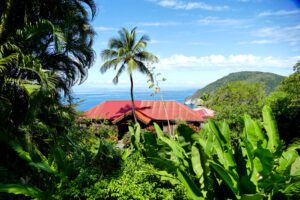
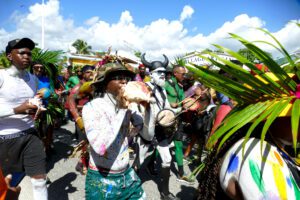
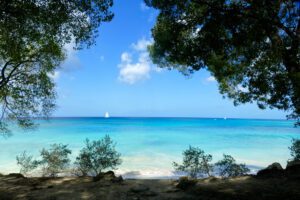
What a wonderful blog! We are septuagenarian Washington DC residents hoping to spend more time in the Caribbean and explore other countries on our ancestral home map. Thanks for making it easier for us!!
I’m glad you find my posts helpful. Enjoy your time in this alluring region to the max!